-
Tim Adamo
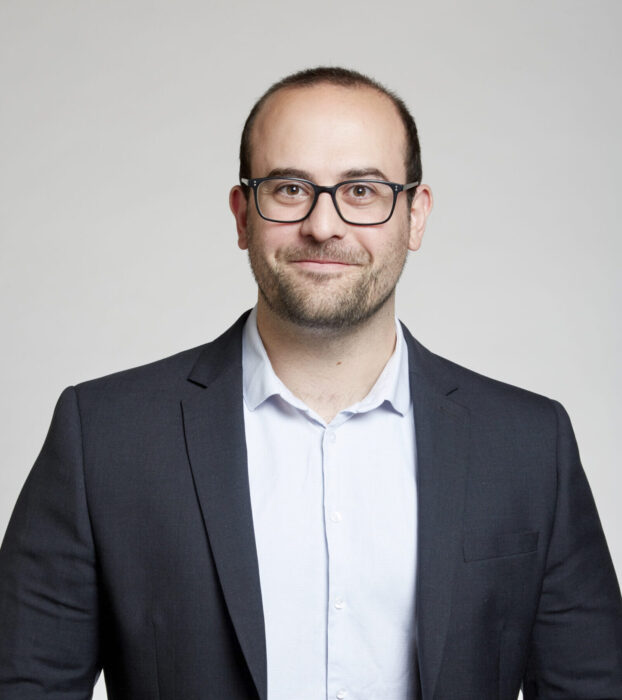 Mathematical formulations of QFTUniversity of Edinburgh
Mathematical formulations of QFTUniversity of EdinburghMy interests include: perturbative structures of gauge and gravitational theories, novel presentations of physical observables, aspects of twistor theory and string theory, and asymptotic properties of general relativity.
My interests include: perturbative structures of gauge and gravitational theories, novel presentations of physical observables, aspects of twistor theory and string theory, and asymptotic properties of general relativity.
-
Murad Alim
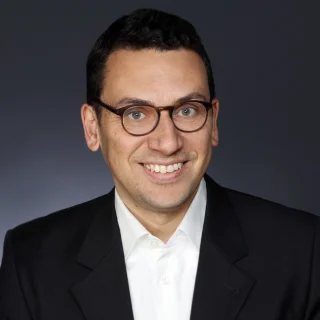 Quantum geometry, in relations to algebraic geometry and number theory.Heriot-Watt University
Quantum geometry, in relations to algebraic geometry and number theory.Heriot-Watt UniversityI am particularly interested in studying the interplay of perturbative and non-perturbative structures using resurgence techniques in the context of topological string theory, mirror symmetry and BPS structures of supersymmetric theories.
I am particularly interested in studying the interplay of perturbative and non-perturbative structures using resurgence techniques in the context of topological string theory, mirror symmetry and BPS structures of supersymmetric theories.
-
Chris Athorne
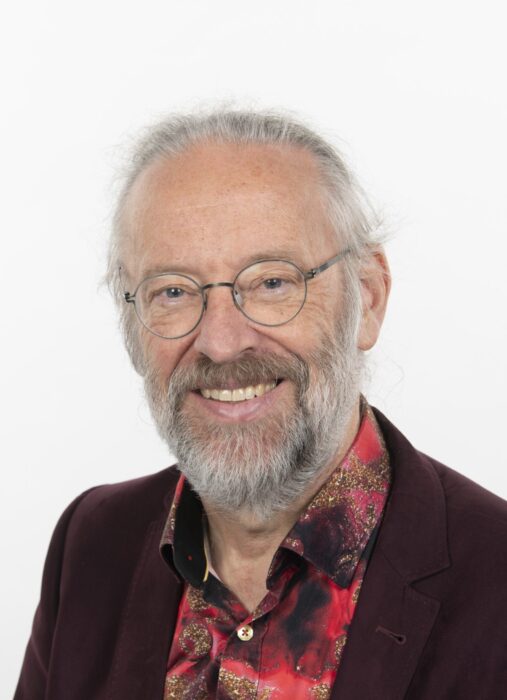 Integrable systems, algebraic and differential geometryUniversity of Glasgow
Integrable systems, algebraic and differential geometryUniversity of GlasgowAlgebraic geometry of generalised $\wp$-functions – geometric structure of partial differential equations on Jacobians of hyperelliptic curves, applications of Lie Algebras in differential equations and Hamiltonian theory – use of representation theory to describe state space for quantum dimer, intertwining relations for differential operators – generalised Laplace maps and Toda lattices, and Gauss-Manin connections – formulation in terms of algebraic invariants.
Algebraic geometry of generalised $\wp$-functions – geometric structure of partial differential equations on Jacobians of hyperelliptic curves, applications of Lie Algebras in differential equations and Hamiltonian theory – use of representation theory to describe state space for quantum dimer, intertwining relations for differential operators – generalised Laplace maps and Toda lattices, and Gauss-Manin connections – formulation in terms of algebraic invariants.
-
Alex Bartel
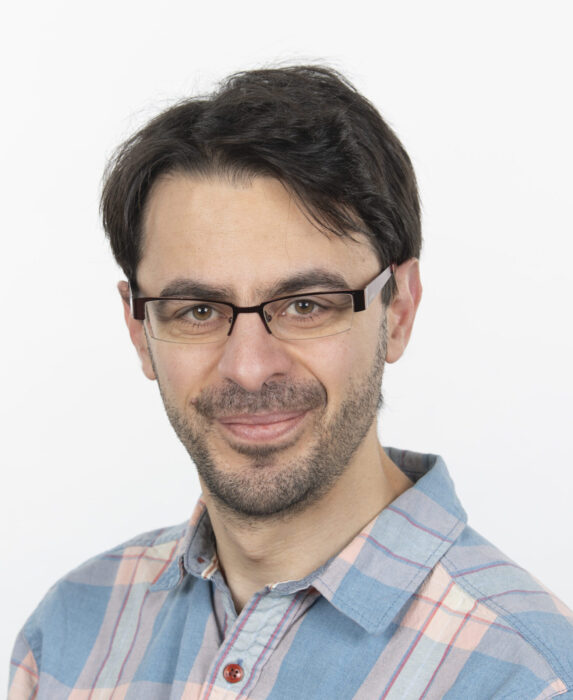 Algebraic number theory, Galois theory, representation theory of finite groups, and optionally elliptic curvesUniversity of Glasgow
Algebraic number theory, Galois theory, representation theory of finite groups, and optionally elliptic curvesUniversity of GlasgowAt the moment, my main interest is in the area of Algebraic Number Theory called Arithmetic Statistics, in particular in the Cohen-Lenstra heuristics on ideal class groups and its many generalisations and variants. I also think about the arithmetic of elliptic curves over number fields, and about the Galois module structure of arithmetic objects, such as rings of integers of number fields, their units, and their higher K-groups. In Representation Theory I think about rational and integral representations of finite groups. I particularly enjoy exploiting connections between representation theory and number theory. Recently, I have also done some research on group actions on the cohomology of low-dimensional manifolds.
At the moment, my main interest is in the area of Algebraic Number Theory called Arithmetic Statistics, in particular in the Cohen-Lenstra heuristics on ideal class groups and its many generalisations and variants. I also think about the arithmetic of elliptic curves over number fields, and about the Galois module structure of arithmetic objects, such as rings of integers of number fields, their units, and their higher K-groups. In Representation Theory I think about rational and integral representations of finite groups. I particularly enjoy exploiting connections between representation theory and number theory. Recently, I have also done some research on group actions on the cohomology of low-dimensional manifolds.
-
Clark Barwick
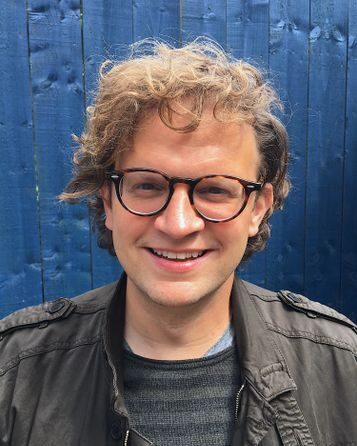 Homotopy theory in the broad senseUniversity of Edinburgh
Homotopy theory in the broad senseUniversity of EdinburghI am interested in connections between homotopy theory, physics, and arithmetic geometry. In the past I have done work in pure higher category theory, homotopical algebra, algebraic K-theory, equivariant homotopy theory, stratified homotopy theory, and étale homotopy theory. My latest project is develop forms of quantum field theory in arithmetic. Currently, this involves using higher categorical structures to reimagine the mathematical foundations of quantum field theory in ways that make it applicable to the sorts of geometries that arise in arithmetic.
I am interested in connections between homotopy theory, physics, and arithmetic geometry. In the past I have done work in pure higher category theory, homotopical algebra, algebraic K-theory, equivariant homotopy theory, stratified homotopy theory, and étale homotopy theory. My latest project is develop forms of quantum field theory in arithmetic. Currently, this involves using higher categorical structures to reimagine the mathematical foundations of quantum field theory in ways that make it applicable to the sorts of geometries that arise in arithmetic.
-
Arend Bayer
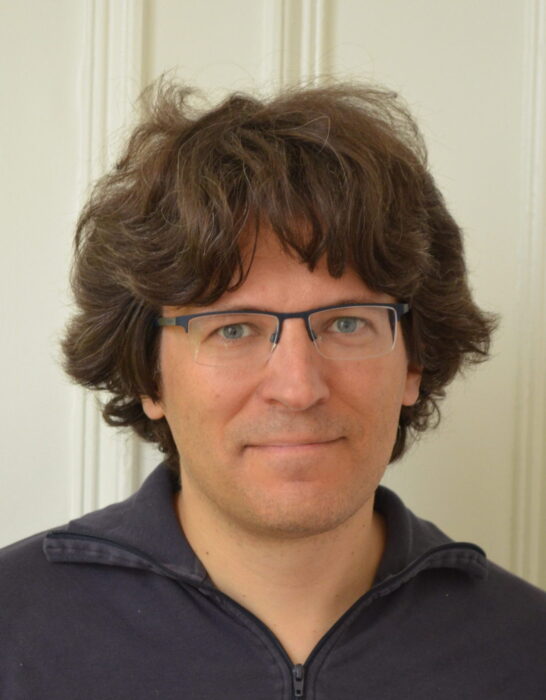 Algebraic Geometry: Stability conditions in triangulated categories Wall-Crossing and birational geometry of moduli spacesUniversity of Edinburgh
Algebraic Geometry: Stability conditions in triangulated categories Wall-Crossing and birational geometry of moduli spacesUniversity of EdinburghI have been working on questions in algebraic geometry motivated by string theory and mirror symmetry, in the last few years mostly derived categories and stability conditions. I am particular intrigued when these modern methods connect to classical questions within algebraic geometry, in particular to the classification of algebraic varieties.
I have been working on questions in algebraic geometry motivated by string theory and mirror symmetry, in the last few years mostly derived categories and stability conditions. I am particular intrigued when these modern methods connect to classical questions within algebraic geometry, in particular to the classification of algebraic varieties.
-
Sjoerd Beentjes
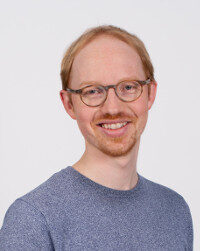 Causal inference; targeted learning; topological data analysis; applications in biomedicineUniversity of Edinburgh
Causal inference; targeted learning; topological data analysis; applications in biomedicineUniversity of EdinburghI am interested in applications of pure mathematics and mathematical statistics to causal questions in population biomedicine and public health policy. This includes targeted learning, causality, representation learning, and topological data analysis. I’m not recruiting PhD students at this time.
I am interested in applications of pure mathematics and mathematical statistics to causal questions in population biomedicine and public health policy. This includes targeted learning, causality, representation learning, and topological data analysis. I’m not recruiting PhD students at this time.
-
Jim Belk
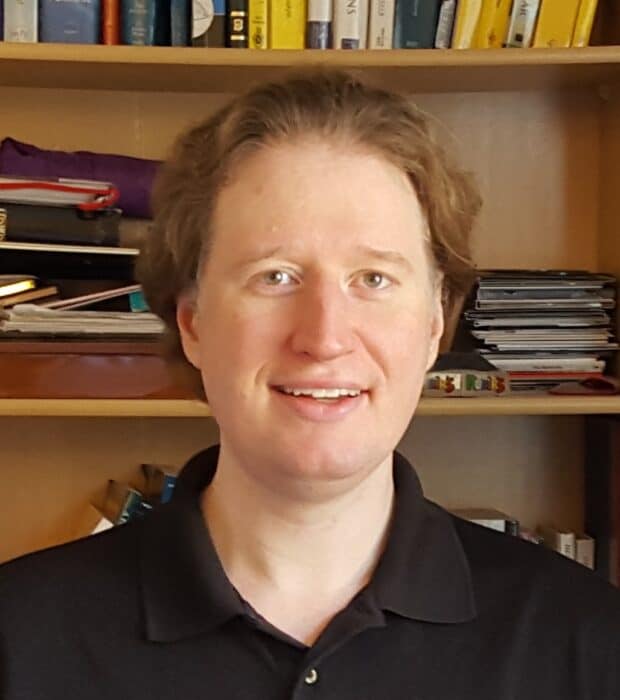 Geometric group theory, dynamical systems, and fractal geometryUniversity of Glasgow
Geometric group theory, dynamical systems, and fractal geometryUniversity of GlasgowI am interested in supervising PhD students in geometric group theory or geometric topology, and my research has significant connections to complex dynamics, fractal geometry, automata theory, quasiconformal geometry, and symbolic dynamics. Please see my web page or contact me for more information.
I am interested in supervising PhD students in geometric group theory or geometric topology, and my research has significant connections to complex dynamics, fractal geometry, automata theory, quasiconformal geometry, and symbolic dynamics. Please see my web page or contact me for more information.
-
Gwyn Bellamy
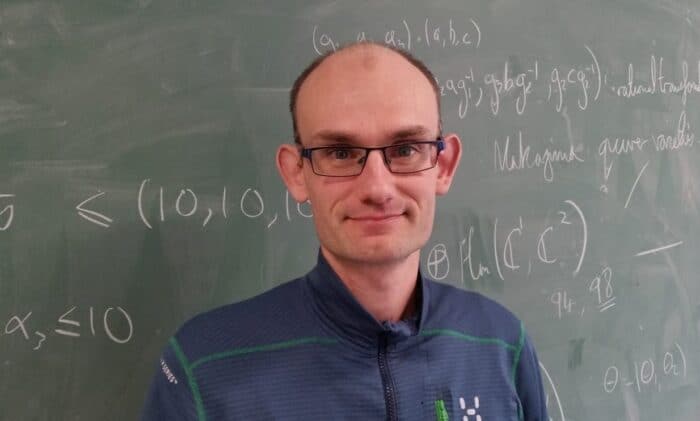 Representation theory, geometric representation theory, the interface of representation theory and algebraic geometry.University of Glasgow
Representation theory, geometric representation theory, the interface of representation theory and algebraic geometry.University of GlasgowI am interested in representation theory and its interaction with geometry. In particular, I am interested in anything that is even remotely related to symplectic reflection algebras (and especially rational Cherednik algebras). To date, “anything” includes symplectic algebraic geometry, D-modules, Calogero-Moser systems, algebraic combinatorics and the representation theory of certain objects of Lie type such as Hecke algebras and q-Schur algebras.
I am interested in representation theory and its interaction with geometry. In particular, I am interested in anything that is even remotely related to symplectic reflection algebras (and especially rational Cherednik algebras). To date, “anything” includes symplectic algebraic geometry, D-modules, Calogero-Moser systems, algebraic combinatorics and the representation theory of certain objects of Lie type such as Hecke algebras and q-Schur algebras.
-
Rachael Boyd
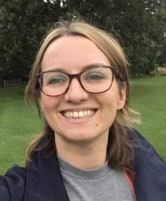 Algebraic topology, geometric topology, geometric group theory and algebraUniversity of Glasgow
Algebraic topology, geometric topology, geometric group theory and algebraUniversity of GlasgowI am interested in developing new topological methods to study groups, algebras, and low dimensional manifolds. Some topics I’m interested in are Artin and Coxeter groups and monoids, topological invariants of diagram algebras and moduli spaces of low dimensional manifolds (specifically links and 3-manifolds). My work lies in the intersection of algebraic topology, geometric topology, and geometric group theory.
I am interested in developing new topological methods to study groups, algebras, and low dimensional manifolds. Some topics I’m interested in are Artin and Coxeter groups and monoids, topological invariants of diagram algebras and moduli spaces of low dimensional manifolds (specifically links and 3-manifolds). My work lies in the intersection of algebraic topology, geometric topology, and geometric group theory.
-
Latham Boyle
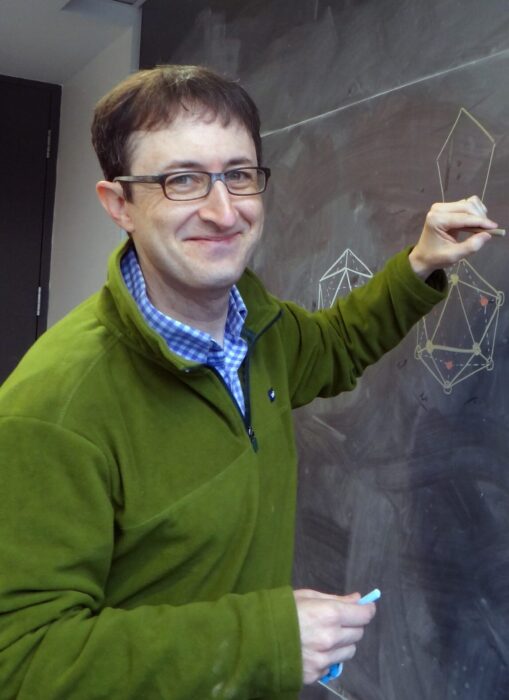 Cosmology, Mathematical Physics, Strong GravityUniversity of Edinburgh
Cosmology, Mathematical Physics, Strong GravityUniversity of EdinburghI am interested in a variety of different topics including cosmology, particle physics, gravitational waves, black holes, and mathematical physics.
I am interested in a variety of different topics including cosmology, particle physics, gravitational waves, black holes, and mathematical physics.
-
Tara Brendle
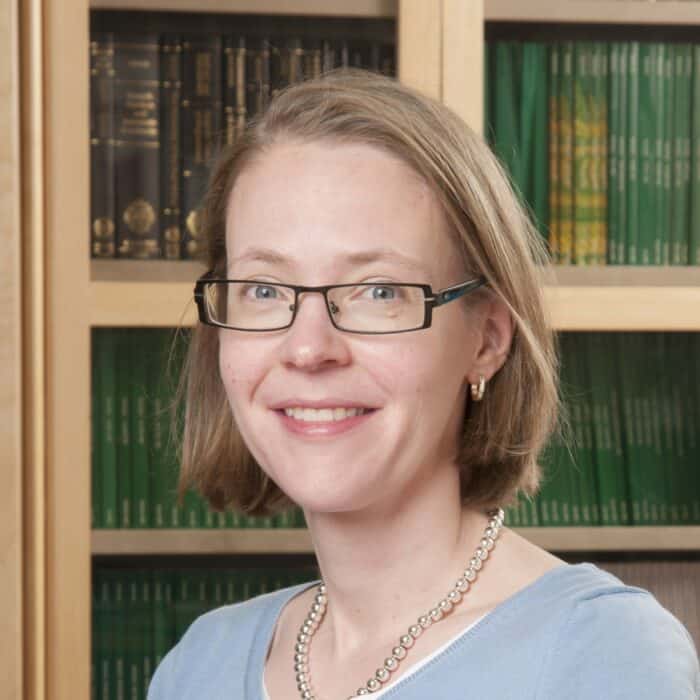 Geometric group theory, low-dimensional topologyUniversity of Glasgow
Geometric group theory, low-dimensional topologyUniversity of GlasgowPossible PhD projects include a variety of topics in geometric group theory and low-dimensional topology, with a particular focus on structures related to surfaces, such as mapping class groups and braid groups.
Possible PhD projects include a variety of topics in geometric group theory and low-dimensional topology, with a particular focus on structures related to surfaces, such as mapping class groups and braid groups.
-
Ivan Cheltsov
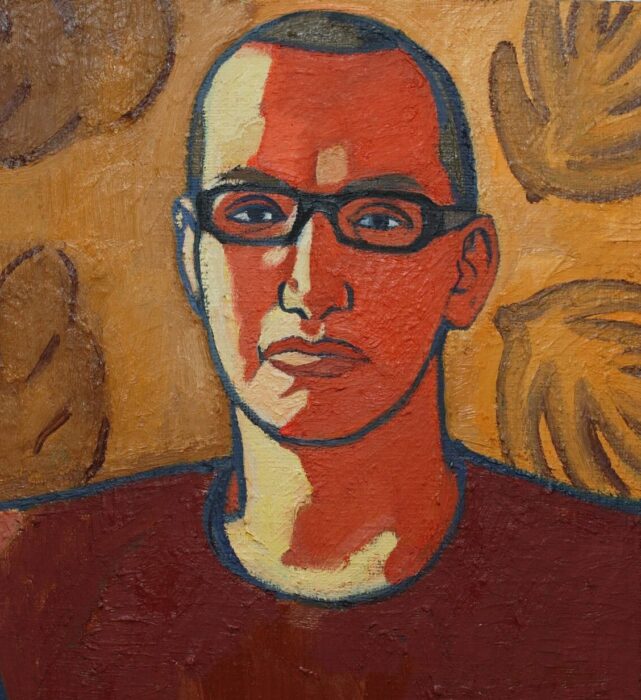 Geometry and TopologyUniversity of Edinburgh
Geometry and TopologyUniversity of EdinburghI am birational geometer interested in K-stability and rationality of Fano varieties, subgroups of Cremona groups, polarized cylinders in rational varieties, and relevant classification type problems.
I am birational geometer interested in K-stability and rationality of Fano varieties, subgroups of Cremona groups, polarized cylinders in rational varieties, and relevant classification type problems.
-
Laura I Radomirovic Ciobanu
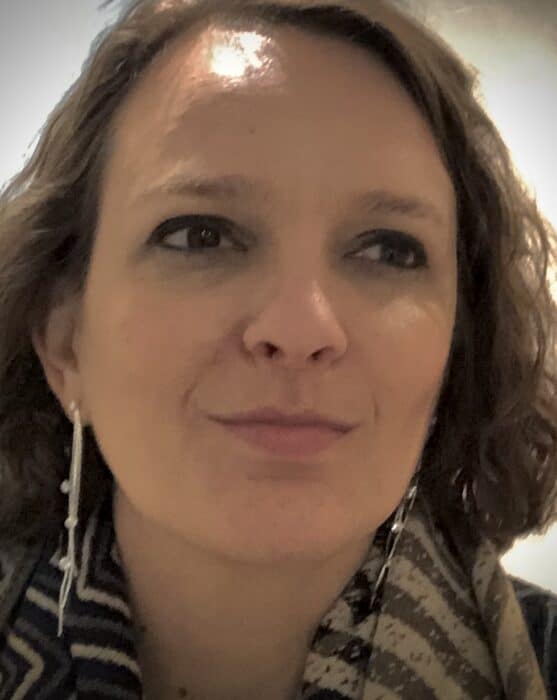 Combinatorial, geometric and algorithmic group theory. Combinatorics and theoretical computer science.Heriot-Watt University
Combinatorial, geometric and algorithmic group theory. Combinatorics and theoretical computer science.Heriot-Watt UniversityI research equations, decision problems, complexity of algorithms, fixed subgroups, etc. in free, hyperbolic, rel. hyp., Artin, Coxeter groups; Group actions on trees, Λ-trees; Formal languages and growth in groups; Analytic properties of groups; Computation in solvable and nilpotent groups. I’m not recruiting PhD students at this time.
I research equations, decision problems, complexity of algorithms, fixed subgroups, etc. in free, hyperbolic, rel. hyp., Artin, Coxeter groups; Group actions on trees, Λ-trees; Formal languages and growth in groups; Analytic properties of groups; Computation in solvable and nilpotent groups. I’m not recruiting PhD students at this time.
-
Matthew Cordes
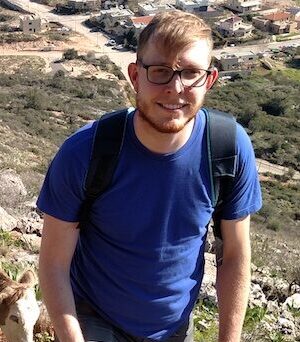 Geometric group theory; the geometric and topological aspects of infinite groups; approximate groups; generalizations of hyperbolicity; boundaries.Heriot-Watt University
Geometric group theory; the geometric and topological aspects of infinite groups; approximate groups; generalizations of hyperbolicity; boundaries.Heriot-Watt UniversityI work in the field of geometric (approximate) group theory. My research interests include groups and spaces with some aspect of negative curvature and their boundaries.
I work in the field of geometric (approximate) group theory. My research interests include groups and spaces with some aspect of negative curvature and their boundaries.
-
Ben Davison
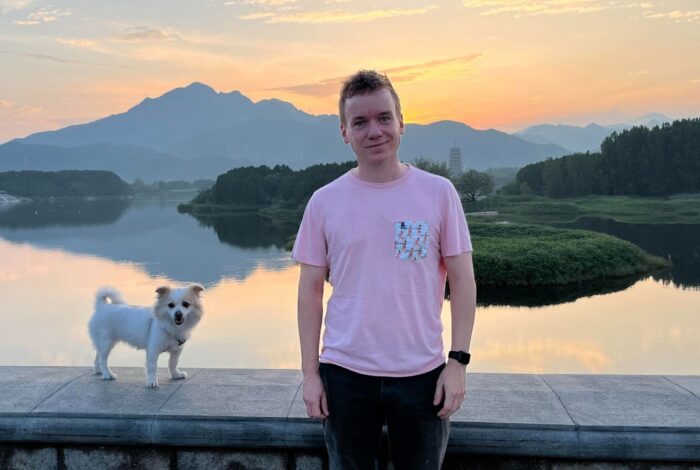 Geometric representation theory, algebraic geometry, combinatorics, cluster algebras and nonabelian Hodge theory.University of Edinburgh
Geometric representation theory, algebraic geometry, combinatorics, cluster algebras and nonabelian Hodge theory.University of EdinburghI work on applications of refined and categorified Donaldson-Thomas theory. This includes work in cluster algebras, quantum groups, nonabelian Hodge theory and enumerative geometry of 3-Calabi-Yau varieties and noncommutative varieties.
I work on applications of refined and categorified Donaldson-Thomas theory. This includes work in cluster algebras, quantum groups, nonabelian Hodge theory and enumerative geometry of 3-Calabi-Yau varieties and noncommutative varieties.
-
Richard Davison
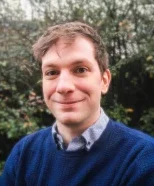 Strongly interacting quantum field theory, hydrodynamics and holographyHeriot-Watt University
Strongly interacting quantum field theory, hydrodynamics and holographyHeriot-Watt UniversityI am interested in the collective dynamics of quantum field theories with strong interactions. For example, understanding how QFTs thermalize and what is the effective theory that applies once this happens. I am particularly interested in a class of theories called holographic theories, where these questions can be answered by studying the dynamics of black holes.
I am interested in the collective dynamics of quantum field theories with strong interactions. For example, understanding how QFTs thermalize and what is the effective theory that applies once this happens. I am particularly interested in a class of theories called holographic theories, where these questions can be answered by studying the dynamics of black holes.
-
Ruadhaí Dervan
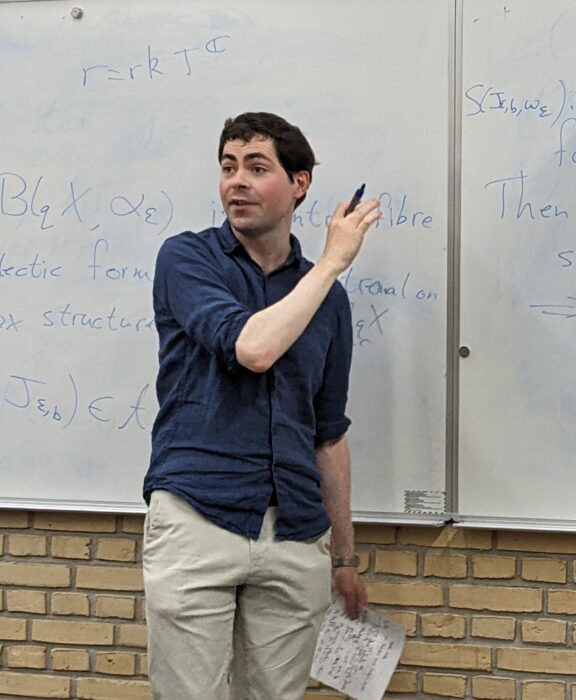 (Complex) algebraic or differential geometryUniversity of Glasgow
(Complex) algebraic or differential geometryUniversity of GlasgowI research complex geometry, which is roughly the intersection of algebraic and differential geometry. I’m interested in both the analytic and algebro-geometric sides of complex geometry, and at the moment most of my work lies somewhere between the two. Topics I’m currently interested in include Kähler geometry, K-stability, geometric invariant theory and moduli theory, amongst others.
I research complex geometry, which is roughly the intersection of algebraic and differential geometry. I’m interested in both the analytic and algebro-geometric sides of complex geometry, and at the moment most of my work lies somewhere between the two. Topics I’m currently interested in include Kähler geometry, K-stability, geometric invariant theory and moduli theory, amongst others.
-
Anastasia Doikou
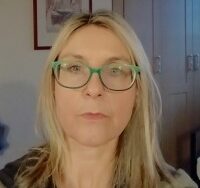 Mathematical physics, in particular quantum and classical integrable models, and quantum groupsHeriot-Watt University
Mathematical physics, in particular quantum and classical integrable models, and quantum groupsHeriot-Watt UniversityI am a mathematical physicist and my research focuses on quantum and classical integrable models. Specifically, I have been studying integrable quantum spin chains and the Bethe ansatz formulation, quantum groups or quasi-triangular Hopf algebras, braid groups, Hecke and Temperley-Lieb algebras, solutions of the Yang-Baxter and reflection equations, and their set-theoretic versions. I am also interested in classical discrete integrable systems & integrable field theories, in particular the Hamiltonian formulation, dressing methods, solitons and integrable PDEs & ODEs.
I am a mathematical physicist and my research focuses on quantum and classical integrable models. Specifically, I have been studying integrable quantum spin chains and the Bethe ansatz formulation, quantum groups or quasi-triangular Hopf algebras, braid groups, Hecke and Temperley-Lieb algebras, solutions of the Yang-Baxter and reflection equations, and their set-theoretic versions. I am also interested in classical discrete integrable systems & integrable field theories, in particular the Hamiltonian formulation, dressing methods, solitons and integrable PDEs & ODEs.
-
Tudor Dimofte
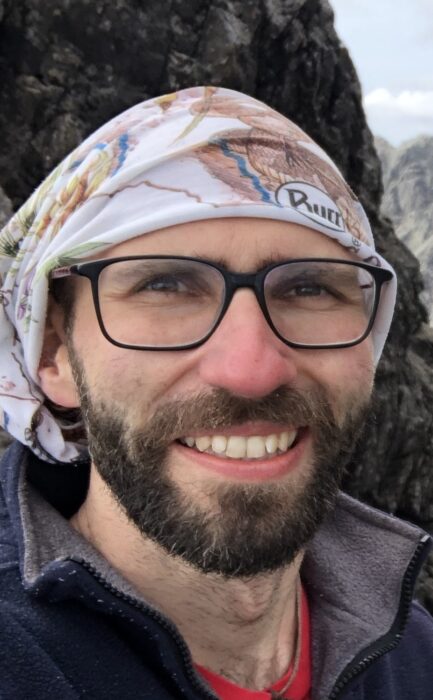 Algebraic, geometric, and topological structures in quantum field theory.University of Edinburgh
Algebraic, geometric, and topological structures in quantum field theory.University of EdinburghMy research lies at the interface of theoretical physics and pure mathematics, inspired by the dual questions: What algebraic and geometric structures govern the behavior of elementary quantum particles and fields? Conversely, how can physics intuition be used to derive new predictions and results in algebra, geometry, and other branches of mathematics? Recently I’ve been interested in how quantum groups (and their cousins) arise in representing extended operators in topological or holomorphic QFT’s, and how they govern representation theory of logarithmic vertex operator algebras.
My research lies at the interface of theoretical physics and pure mathematics, inspired by the dual questions: What algebraic and geometric structures govern the behavior of elementary quantum particles and fields? Conversely, how can physics intuition be used to derive new predictions and results in algebra, geometry, and other branches of mathematics? Recently I’ve been interested in how quantum groups (and their cousins) arise in representing extended operators in topological or holomorphic QFT’s, and how they govern representation theory of logarithmic vertex operator algebras.
-
Misha Feigin
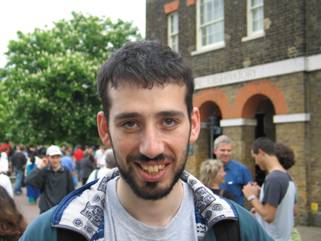 Integrable systems, Frobenius manifolds, Cherednik algebrasUniversity of Glasgow
Integrable systems, Frobenius manifolds, Cherednik algebrasUniversity of GlasgowThe area of my research is theory of integrable systems in relations with algebra, geometry and mathematical physics. More specifically, I am working on quantum integrable systems of Calogero-Moser type and their relativistic analogues known as Ruijsenaars-Macdonald operators, Baker-Akhiezer functions and Darboux transformations in many dimensions, Hadamard’s problem in the theory of Huygens’ Principle, Coxeter and other hyperplane arrangements, rings of quasi-invariants, representations of Cherednik algebras, Frobenius manifolds, WDVV equations.
The area of my research is theory of integrable systems in relations with algebra, geometry and mathematical physics. More specifically, I am working on quantum integrable systems of Calogero-Moser type and their relativistic analogues known as Ruijsenaars-Macdonald operators, Baker-Akhiezer functions and Darboux transformations in many dimensions, Hadamard’s problem in the theory of Huygens’ Principle, Coxeter and other hyperplane arrangements, rings of quasi-invariants, representations of Cherednik algebras, Frobenius manifolds, WDVV equations.
-
José Miguel Figueroa-O'Farrill
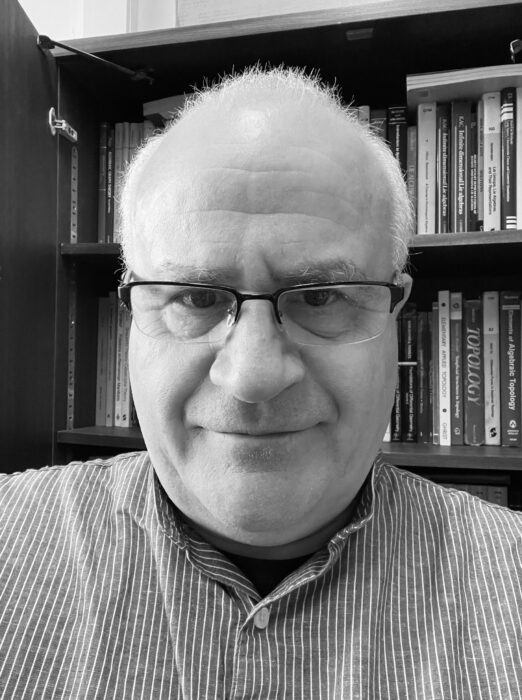 Mathematical Physics, Differential Geometry, Representation TheoryUniversity of Edinburgh
Mathematical Physics, Differential Geometry, Representation TheoryUniversity of EdinburghI am exploring two extensions of Klein’s Erlanger Programme, in which geometry/dynamics is dictated by symmetry.
The supergravity Erlanger Programme describes supersymmetric supergravity backgrounds via their Killing superalgebras, which we study using generalised Spencer cohomology. This has applications beyond supergravity, helping to determine those geometries admitting rigid supersymmetry.
The kinematical Erlanger Programme results by including time as an additional ingredient. The Klein geometries are now homogeneous spacetimes. A lot of my research is devoted to studying the beautiful interplay between two homogeneous geometries of kinematical groups: their homogeneous spacetimes and their homogeneous symplectic manifolds. This allows one to study classical and quantum particles and fields associated with a kinematical group.”
I am exploring two extensions of Klein’s Erlanger Programme, in which geometry/dynamics is dictated by symmetry.
The supergravity Erlanger Programme describes supersymmetric supergravity backgrounds via their Killing superalgebras, which we study using generalised Spencer cohomology. This has applications beyond supergravity, helping to determine those geometries admitting rigid supersymmetry.
The kinematical Erlanger Programme results by including time as an additional ingredient. The Klein geometries are now homogeneous spacetimes. A lot of my research is devoted to studying the beautiful interplay between two homogeneous geometries of kinematical groups: their homogeneous spacetimes and their homogeneous symplectic manifolds. This allows one to study classical and quantum particles and fields associated with a kinematical group.”
-
Vaibhav Gadre
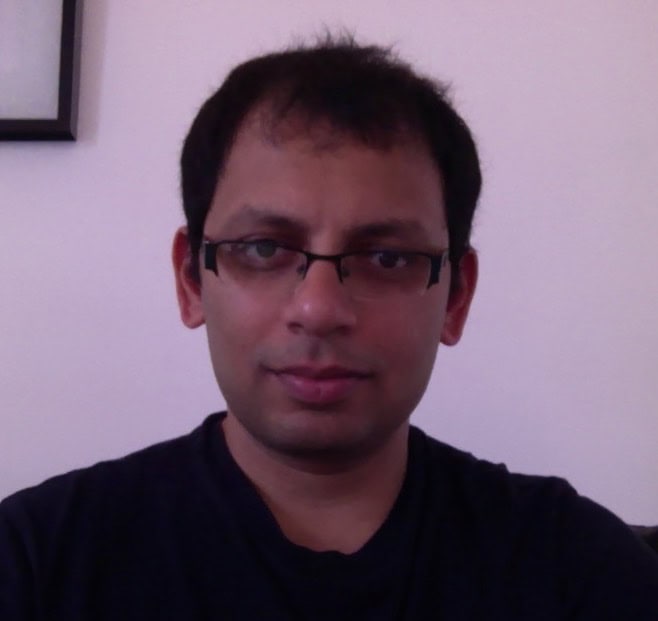 Geometry and DynamicsUniversity of Glasgow
Geometry and DynamicsUniversity of GlasgowI am broadly interested in geometry, topology and dynamics with particular focus on Teichmüller dynamics.
I am broadly interested in geometry, topology and dynamics with particular focus on Teichmüller dynamics.
-
Einan Gardi
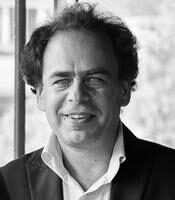 Theoretical Particle Physics. Quantum Field Theory. Scattering amplitudes.University of Edinburgh
Theoretical Particle Physics. Quantum Field Theory. Scattering amplitudes.University of EdinburghMy research interests are in perturbative scattering amplitudes in Quantum Chromodynamics and related gauge theories, motivated by collider physics as well as fundamental questions. The mathematical structure of amplitudes encodes key principles such as unitarity. locality and causality. I am particularly interested in long-distance singularities of amplitudes, and in their behaviour in special kinematic limits where new factorization properties emerge (e.g. Regge or collinear limits). I also study the mathematical structure of Feynman integrals, their asymptotic expansions, their cuts and discontinuities, as well as the differential equations they satisfy.
My research interests are in perturbative scattering amplitudes in Quantum Chromodynamics and related gauge theories, motivated by collider physics as well as fundamental questions. The mathematical structure of amplitudes encodes key principles such as unitarity. locality and causality. I am particularly interested in long-distance singularities of amplitudes, and in their behaviour in special kinematic limits where new factorization properties emerge (e.g. Regge or collinear limits). I also study the mathematical structure of Feynman integrals, their asymptotic expansions, their cuts and discontinuities, as well as the differential equations they satisfy.
-
James Gaunt
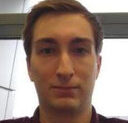 Heriot-Watt University
Heriot-Watt UniversityMy research interests centre around the area of non-commutative geometry, quantum gravity and algebraic quantum field theory.
My research interests centre around the area of non-commutative geometry, quantum gravity and algebraic quantum field theory.
-
Claire Gilson
Integrable systemsUniversity of GlasgowContinuous and discrete integrable systems with a particular interest in noncommutative systems.
Continuous and discrete integrable systems with a particular interest in noncommutative systems.
-
Iain Gordon
 Representation theory and its applicationsUniversity of Edinburgh
Representation theory and its applicationsUniversity of EdinburghI am interested in Lie theoretic representation theory and its connections with combinatorics, geometry and noncommutative things.
I am interested in Lie theoretic representation theory and its connections with combinatorics, geometry and noncommutative things.
-
Damián Gvirtz-Chen
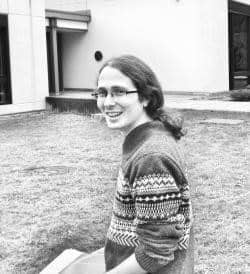 Rational points on higher-dimensional varietiesUniversity of Glasgow
Rational points on higher-dimensional varietiesUniversity of GlasgowI work at the intersection of algebraic geometry and number theory on the behaviour of rational points on algebraic varieties. My past research interests have included K3 surfaces, zero-cycles, Brauer-Manin obstruction, density of rational points, the Hilbert Property and p-adic geometry.
I work at the intersection of algebraic geometry and number theory on the behaviour of rational points on algebraic varieties. My past research interests have included K3 surfaces, zero-cycles, Brauer-Manin obstruction, density of rational points, the Hilbert Property and p-adic geometry.
-
Jelle Hartong
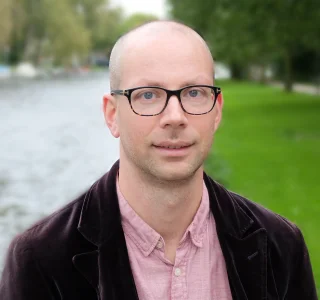 Holographic dualities in quantum gravity and string theory.University of Edinburgh
Holographic dualities in quantum gravity and string theory.University of EdinburghMy research concerns holographic dualities in quantum gravity and string theory. In particular I am interested in limits of the AdS/CFT correspondence in which the duality becomes more tractable. In relation to this, I have worked on the foundations and applications of non-Lorentzian geometries, such as Newton-Cartan and Carroll geometries, that arise in limits of string theory and general relativity. For example, I am interested in asymptotically flat spacetimes and the Carroll geometry and symmetries that appear on the boundaries of such spacetimes.
My research concerns holographic dualities in quantum gravity and string theory. In particular I am interested in limits of the AdS/CFT correspondence in which the duality becomes more tractable. In relation to this, I have worked on the foundations and applications of non-Lorentzian geometries, such as Newton-Cartan and Carroll geometries, that arise in limits of string theory and general relativity. For example, I am interested in asymptotically flat spacetimes and the Carroll geometry and symmetries that appear on the boundaries of such spacetimes.
-
Milena Hering
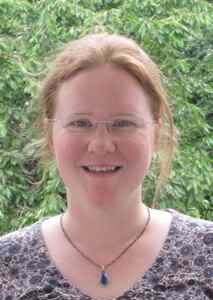 Algebraic geometry and combinatorics; Toric varieties; Syzygies; Hilbert schemes.University of Edinburgh
Algebraic geometry and combinatorics; Toric varieties; Syzygies; Hilbert schemes.University of EdinburghI am working on algebraic geometry, commutative algebra, and combinatorics. My interests include positivity properties of line bundles and syzygies, toric varieties, and tropical varieties.
I am working on algebraic geometry, commutative algebra, and combinatorics. My interests include positivity properties of line bundles and syzygies, toric varieties, and tropical varieties.
-
Jeff Hicks
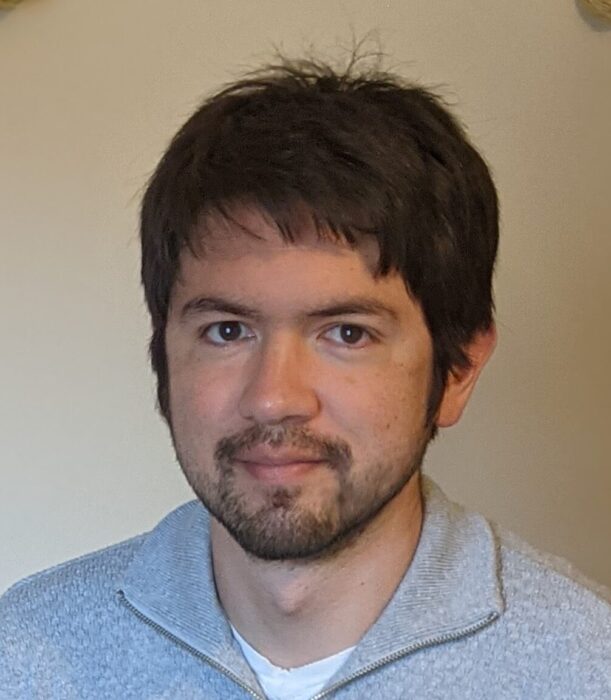 Mirror symmetry, tropical geometryUniversity of Edinburgh
Mirror symmetry, tropical geometryUniversity of EdinburghI am interested in applications of mirror symmetry (an equivalence between algebraic and symplectic geometry) towards problems in tropical geometry and toric varieties. I also think about problems in pure symplectic topology.
I am interested in applications of mirror symmetry (an equivalence between algebraic and symplectic geometry) towards problems in tropical geometry and toric varieties. I also think about problems in pure symplectic topology.
-
Lotte Hollands
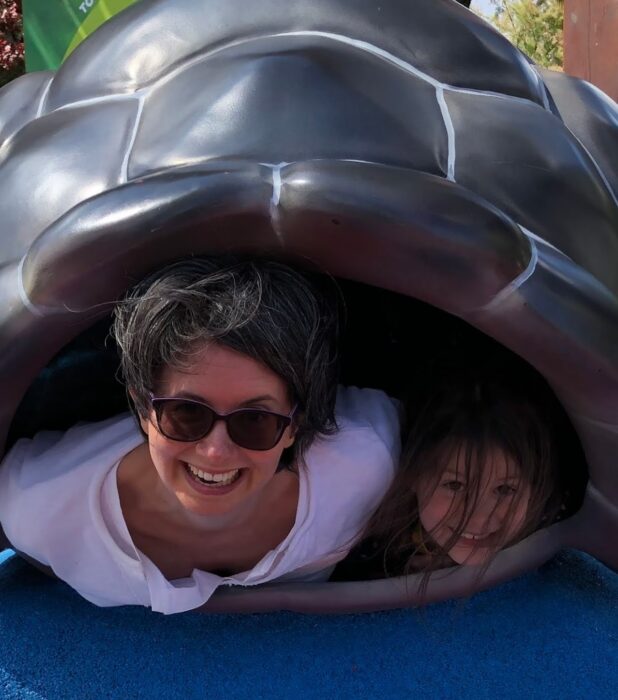 Supersymmetric gauge theory and its interactions with algebra, geometry and topology.Heriot-Watt University
Supersymmetric gauge theory and its interactions with algebra, geometry and topology.Heriot-Watt UniversityMy research is on the interface of quantum physics and mathematics. On the physics side I am inspired by fundamental questions in supersymmetric gauge theory and string theory. On the mathematics side this often prompts deep relations with geometry, topology and algebra.
My research is on the interface of quantum physics and mathematics. On the physics side I am inspired by fundamental questions in supersymmetric gauge theory and string theory. On the mathematics side this often prompts deep relations with geometry, topology and algebra.
-
Anton Ilderton
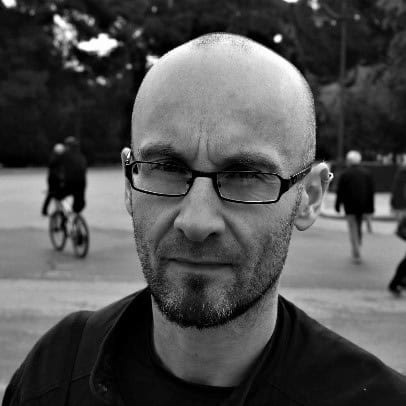 Theoretical Physics, Fundamental TheoryUniversity of Edinburgh
Theoretical Physics, Fundamental TheoryUniversity of EdinburghI am interested in strong field effects in both gauge theory and gravity, in particular all-orders and non-perturbative effects. This includes the definition and properties of scattering amplitudes in strong fields and curved spacetime, double copy in background fields, and applications of quantum field theoretic methods to the phenomenology of intense laser-matter interactions.
I am interested in strong field effects in both gauge theory and gravity, in particular all-orders and non-perturbative effects. This includes the definition and properties of scattering amplitudes in strong fields and curved spacetime, double copy in background fields, and applications of quantum field theoretic methods to the phenomenology of intense laser-matter interactions.
-
David Jordan
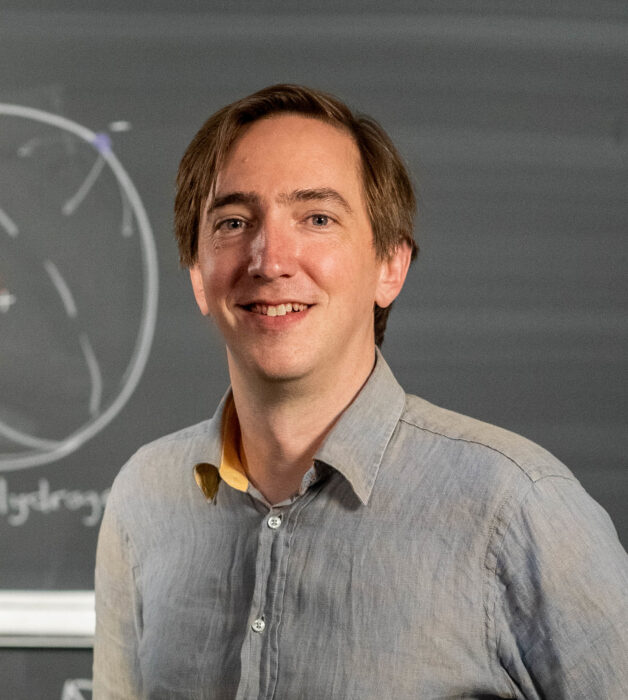 Quantum Topology & Representation TheoryUniversity of Edinburgh
Quantum Topology & Representation TheoryUniversity of EdinburghThe problems that interest me the most concern the interactions between low dimensional topology, non-commutative algebra, and representation theory, especially as these interactions arise in mathematical physics and gauge theory.
The problems that interest me the most concern the interactions between low dimensional topology, non-commutative algebra, and representation theory, especially as these interactions arise in mathematical physics and gauge theory.
-
Minhyong Kim
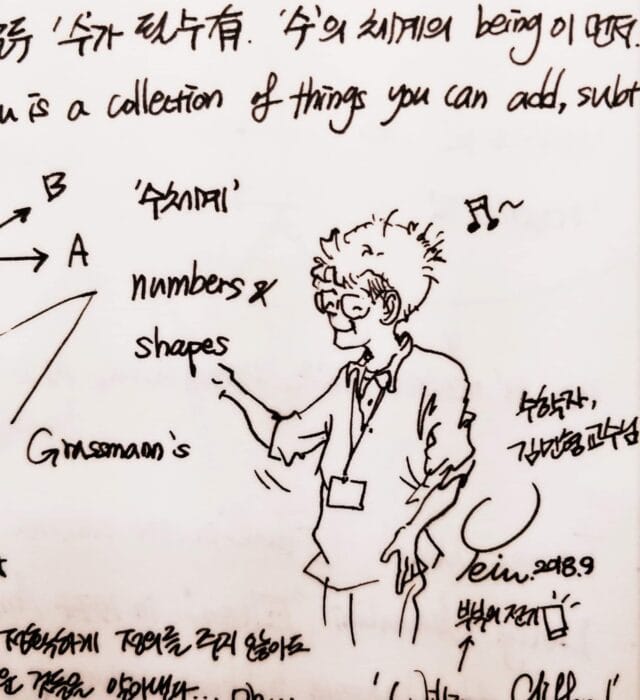 Arithmetic geometryUniversity of Edinburgh
Arithmetic geometryUniversity of EdinburghMy research is mostly in arithmetic geometry, the study of structures that have a combination of arithmetic and geometric natures, Recently, I’ve been mostly interested in the interface between arithmetic geometry and quantum field theory. You can see some of my papers listed on my webpage. My main contribution to mathematics is the discovery of the non-abelian method of Chabauty, a theoretical framework for applying ideas of topology, especially homotopy theory, to the algorithmic resolution of Diophantine equations.
My research is mostly in arithmetic geometry, the study of structures that have a combination of arithmetic and geometric natures, Recently, I’ve been mostly interested in the interface between arithmetic geometry and quantum field theory. You can see some of my papers listed on my webpage. My main contribution to mathematics is the discovery of the non-abelian method of Chabauty, a theoretical framework for applying ideas of topology, especially homotopy theory, to the algorithmic resolution of Diophantine equations.
-
Christian Korff
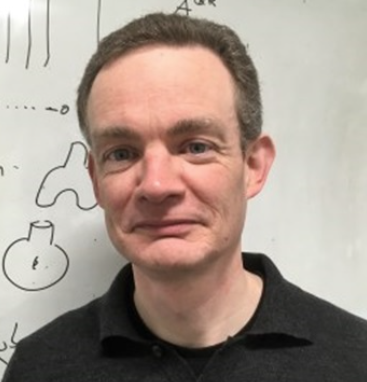 Quantum integrable models connected with solutions of the Yang-Baxter equationUniversity of Glasgow
Quantum integrable models connected with solutions of the Yang-Baxter equationUniversity of GlasgowI am interested in areas where algebra and representation theory meet problems arising in physical systems. My research focusses on quantum integrable models connected with solutions of the Yang-Baxter equation. The latter include exactly solvable lattice models in statistical mechanics, quantum many body systems and lower dimensional quantum field theories.
I am interested in areas where algebra and representation theory meet problems arising in physical systems. My research focusses on quantum integrable models connected with solutions of the Yang-Baxter equation. The latter include exactly solvable lattice models in statistical mechanics, quantum many body systems and lower dimensional quantum field theories.
-
Dimitra Kosta
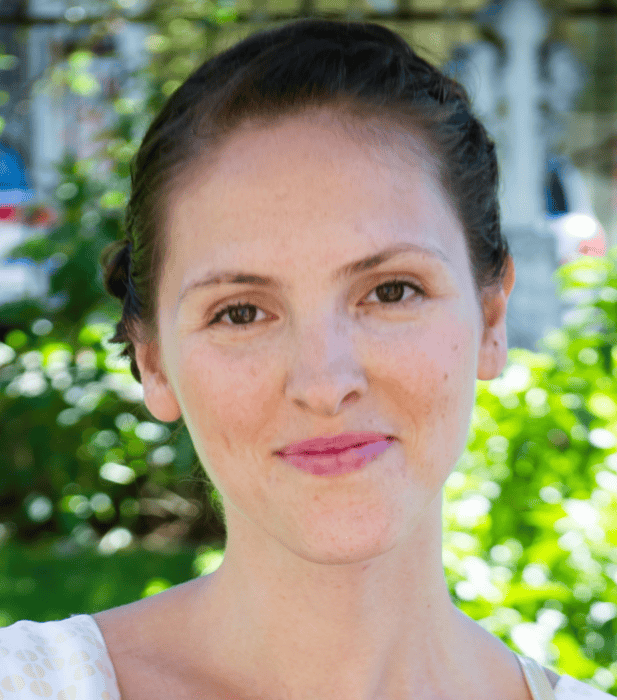 Interplay between algebra, geometry and statistics.University of Edinburgh
Interplay between algebra, geometry and statistics.University of EdinburghMy research interests have expanded to include algebraic statistics, phylogenetic algebraic geometry, computational commutative algebra and applied algebraic geometry.
My research interests have expanded to include algebraic statistics, phylogenetic algebraic geometry, computational commutative algebra and applied algebraic geometry.
-
Anatoly Konechny
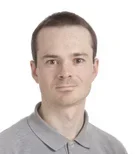 Two-dimensional conformal field theory and renormalization group flowsHeriot-Watt University
Two-dimensional conformal field theory and renormalization group flowsHeriot-Watt UniversityMy research interests are in two-dimensional conformal field theory (2D CFT) and its applications. More specifically, I am interested in applying 2D CFT methods to the study of renormalization group (RG) flows in low-dimensional quantum systems. I am working on developing new non-perturbative methods such as constraints from topological defects, renormalisation interfaces, variational methods and numerical Hamiltonian truncation methods that would allow one to chart the topology and geometry of spaces of RG flows.
My research interests are in two-dimensional conformal field theory (2D CFT) and its applications. More specifically, I am interested in applying 2D CFT methods to the study of renormalization group (RG) flows in low-dimensional quantum systems. I am working on developing new non-perturbative methods such as constraints from topological defects, renormalisation interfaces, variational methods and numerical Hamiltonian truncation methods that would allow one to chart the topology and geometry of spaces of RG flows.
-
Jules Lamers
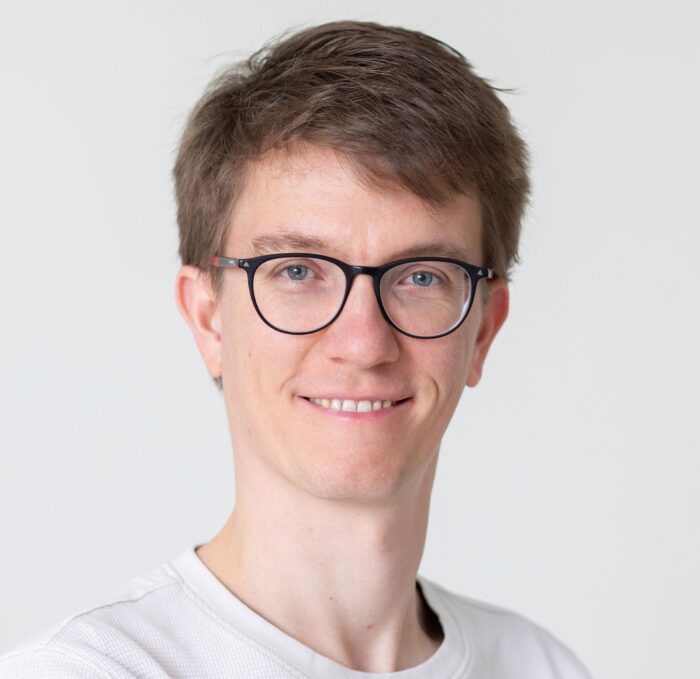 Quantum integrable systems: from algebra to quantum physicsUniversity of Glasgow
Quantum integrable systems: from algebra to quantum physicsUniversity of GlasgowI am interested in representation theory with a view towards quantum physics. I like affine Hecke algebras and quantum groups, along with their Schur–Weyl dualities and elliptic generalisations. My research focusses on the interplay between such algebraic structures and quantum many-body systems of Calogero–Sutherland and Ruijsenaars–Macdonald type, along with their connections to quantum spin chains.
I am interested in representation theory with a view towards quantum physics. I like affine Hecke algebras and quantum groups, along with their Schur–Weyl dualities and elliptic generalisations. My research focusses on the interplay between such algebraic structures and quantum many-body systems of Calogero–Sutherland and Ruijsenaars–Macdonald type, along with their connections to quantum spin chains.
-
Mark Lawson
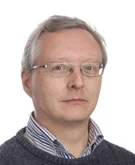 Semigroup theory, automata theory and category theoryHeriot-Watt University
Semigroup theory, automata theory and category theoryHeriot-Watt UniversityI am currently working on the connections between partial symmetries, topological groupoids and C*-algebras. These diverse topics are linked by a non-commutative generalization of Stone duality.
I am currently working on the connections between partial symmetries, topological groupoids and C*-algebras. These diverse topics are linked by a non-commutative generalization of Stone duality.
-
Ana Garcia Lecuona
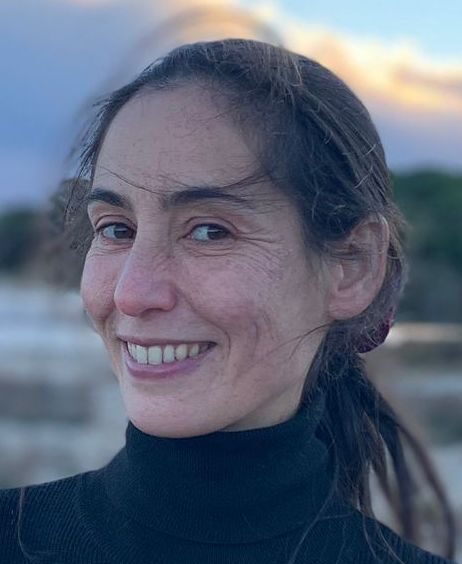 Knot theory, low dimensional topology, contact and symplectic topologyUniversity of Glasgow
Knot theory, low dimensional topology, contact and symplectic topologyUniversity of GlasgowMy research interests are in low dimensional topology. I particularly like knots and questions that arise from them. My research tends to be more on the algebraic/combinatorial side. I’m not recruiting PhD students at this time.
My research interests are in low dimensional topology. I particularly like knots and questions that arise from them. My research tends to be more on the algebraic/combinatorial side. I’m not recruiting PhD students at this time.
-
Darrick Lee
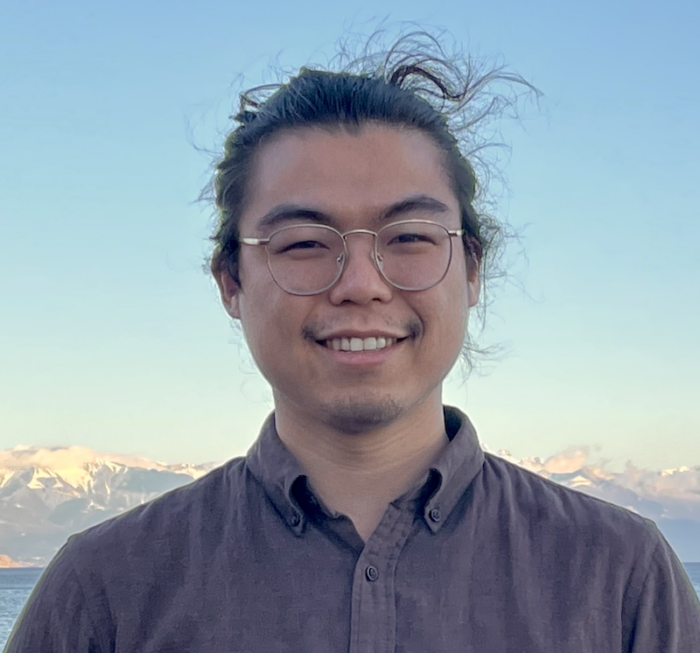 Applications of category theory and geometry in machine learning, topological data analysisUniversity of Edinburgh
Applications of category theory and geometry in machine learning, topological data analysisUniversity of EdinburghI am interested in developing tools at the interface of probability, geometry, and category theory for applications in machine learning. This involves establishing new theoretical results, deriving efficient computational algorithms, and working with scientists/engineers to apply to real-world problems. My recent work uses tools from higher geometry to build composable features for surface-valued data (ie. images).
I am interested in developing tools at the interface of probability, geometry, and category theory for applications in machine learning. This involves establishing new theoretical results, deriving efficient computational algorithms, and working with scientists/engineers to apply to real-world problems. My recent work uses tools from higher geometry to build composable features for surface-valued data (ie. images).
-
Tom Leinster
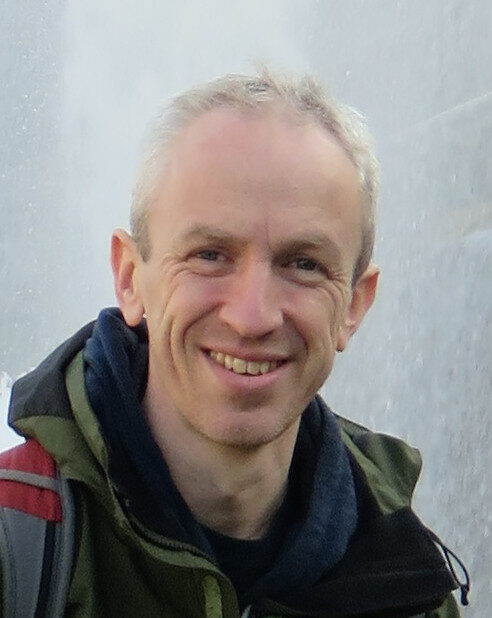 Category theory and its applicationsUniversity of Edinburgh
Category theory and its applicationsUniversity of EdinburghMost of what I do is about category theory and its many applications, including some nonstandard ones such as metric geometry and aspects of both analysis and theoretical ecology. They are loosely unified by the themes of size and measurement. My papers, talks and blog entries can all be found through my home page – https://www.maths.ed.ac.uk/~tl.
Most of what I do is about category theory and its many applications, including some nonstandard ones such as metric geometry and aspects of both analysis and theoretical ecology. They are loosely unified by the themes of size and measurement. My papers, talks and blog entries can all be found through my home page – https://www.maths.ed.ac.uk/~tl.
-
Xin Li
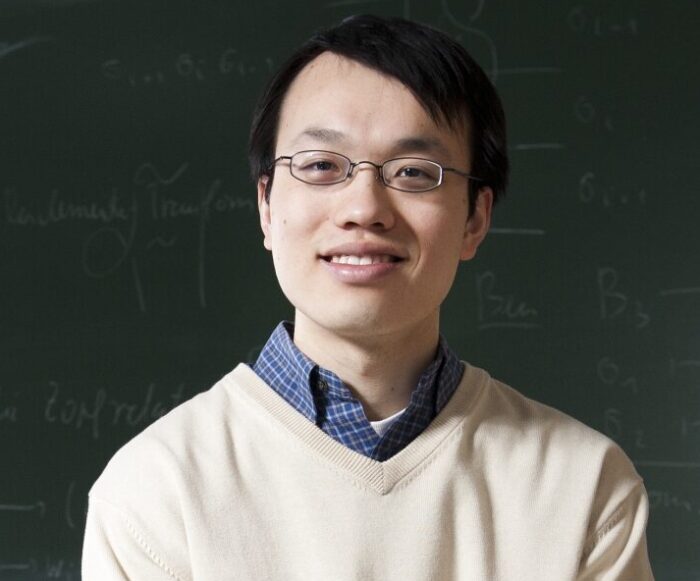 C*-algebras, topological dynamics, group theoryUniversity of Glasgow
C*-algebras, topological dynamics, group theoryUniversity of GlasgowI am interested in taking new PhD students. I am working on C*-algebras and their connections to other mathematical disciplines such as topological dynamics or group theory.
I am interested in taking new PhD students. I am working on C*-algebras and their connections to other mathematical disciplines such as topological dynamics or group theory.
-
James Lucietti
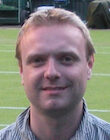 Mathematical physics, general relativity, black holes, geometryUniversity of Edinburgh
Mathematical physics, general relativity, black holes, geometryUniversity of EdinburghI work on general relativity and gravitational theories inspired by string theory and holography. Much of my research focuses on black hole solutions and related geometries in these contexts, with an emphasis on their construction and classification. I have a particular interest in higher-dimensional black holes, supersymmetric black holes, extremal black holes and near-horizon geometries.
I work on general relativity and gravitational theories inspired by string theory and holography. Much of my research focuses on black hole solutions and related geometries in these contexts, with an emphasis on their construction and classification. I have a particular interest in higher-dimensional black holes, supersymmetric black holes, extremal black holes and near-horizon geometries.
-
Antony Maciocia
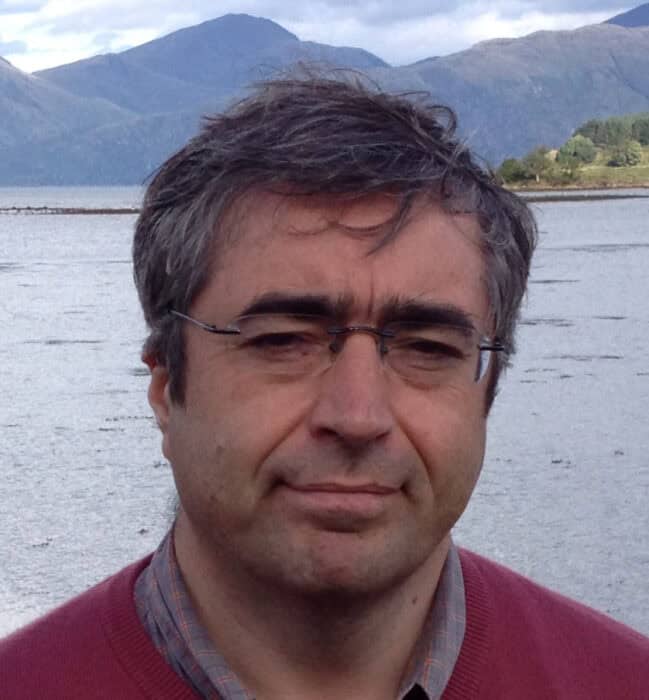 Moduli spaces of bundles and sheaves. Abelian varieties, Fourier-Mukai transform, enumerative geometry, derived and triangulated categories, geometric logic.University of Edinburgh
Moduli spaces of bundles and sheaves. Abelian varieties, Fourier-Mukai transform, enumerative geometry, derived and triangulated categories, geometric logic.University of EdinburghMy primary interests are in moduli spaces of objects in the derived category of sheaves on low dimensional algebraic varieties, especially Calabi-Yau varieties and more especially abelian and K3 surfaces. I am also interested in triangulated categories, higher triangles and hyperkahler geometry more generally. I am especially fond of the Fourier-Mukai transform as a means to understand the detailed structure of varieties and their moduli spaces of sheaves.
My primary interests are in moduli spaces of objects in the derived category of sheaves on low dimensional algebraic varieties, especially Calabi-Yau varieties and more especially abelian and K3 surfaces. I am also interested in triangulated categories, higher triangles and hyperkahler geometry more generally. I am especially fond of the Fourier-Mukai transform as a means to understand the detailed structure of varieties and their moduli spaces of sheaves.
-
Radu Mardare
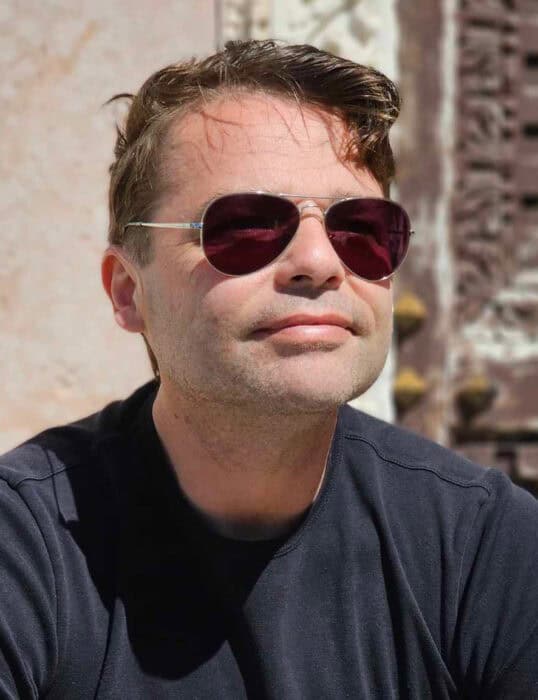 Heriot-Watt University
Heriot-Watt UniversityMy research is at the intersection of Computer Science and Mathematics. I am mainly interested in the foundations of non-standard (e.g., stochastic, probabilistic) computational paradigms that combine logics, model theory and categorical semantics with continuous mathematics (topology, measure theory, integration theory).
My research is at the intersection of Computer Science and Mathematics. I am mainly interested in the foundations of non-standard (e.g., stochastic, probabilistic) computational paradigms that combine logics, model theory and categorical semantics with continuous mathematics (topology, measure theory, integration theory).
-
Johan Martens
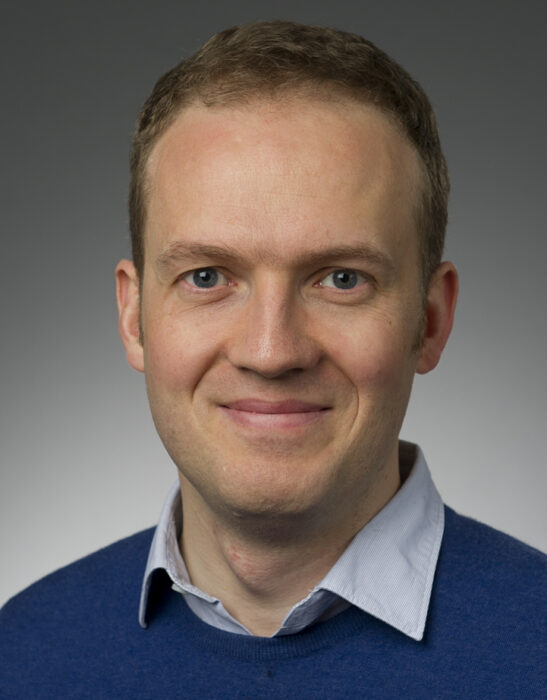 Algebraic and symplectic geometryUniversity of Edinburgh
Algebraic and symplectic geometryUniversity of EdinburghI study algebro-geometric and symplectic structures of various moduli spaces, mostly with links to physics (gauge theory, conformal field theory, integrable systems).
I study algebro-geometric and symplectic structures of various moduli spaces, mostly with links to physics (gauge theory, conformal field theory, integrable systems).
-
Alexandre Martin
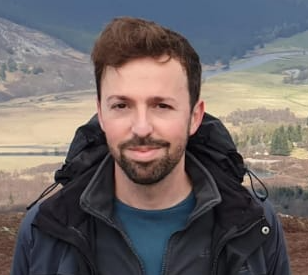 Geometric group theory, group actions in nonpositive curvature, hyperbolic geometry, Artin groups.Heriot-Watt University
Geometric group theory, group actions in nonpositive curvature, hyperbolic geometry, Artin groups.Heriot-Watt UniversityI am interested in understanding groups through their actions on nonpositively curved spaces. Groups that admit such nice actions include Coxeter groups, Artin groups, mapping class groups, and many more. Recently, I have used this geometric approach to understand the algebraic structure (subgroups, automorphisms, etc.) of Artin groups, as well as their geometry.
I am interested in understanding groups through their actions on nonpositively curved spaces. Groups that admit such nice actions include Coxeter groups, Artin groups, mapping class groups, and many more. Recently, I have used this geometric approach to understand the algebraic structure (subgroups, automorphisms, etc.) of Artin groups, as well as their geometry.
-
Davide Micheletto
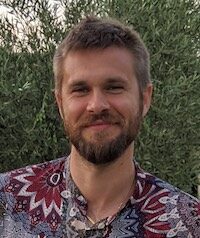 Soft Matter, Topologically Active Polymers, Biophysics, Knots, PolymersUniversity of Edinburgh
Soft Matter, Topologically Active Polymers, Biophysics, Knots, PolymersUniversity of EdinburghI am interested in topological problems in soft matter and biology.
I am interested in topological problems in soft matter and biology.
-
Dinakar Muthiah
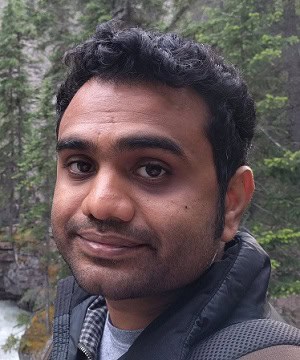 Representation Theory and Algebraic GeometryUniversity of Glasgow
Representation Theory and Algebraic GeometryUniversity of GlasgowMy interests lie in Representation Theory and Algebraic Geometry. Specifically, I am interested in loop groups and double loop groups. This involves many aspects: affine Grassmannians, p-adic groups, Hecke algebras, and recently quiver varieties and Coulomb branches to name a few. Through p-adic groups, many of these topics make contact with number theory and the Langlands program.
My interests lie in Representation Theory and Algebraic Geometry. Specifically, I am interested in loop groups and double loop groups. This involves many aspects: affine Grassmannians, p-adic groups, Hecke algebras, and recently quiver varieties and Coulomb branches to name a few. Through p-adic groups, many of these topics make contact with number theory and the Langlands program.
-
Brendan Owens
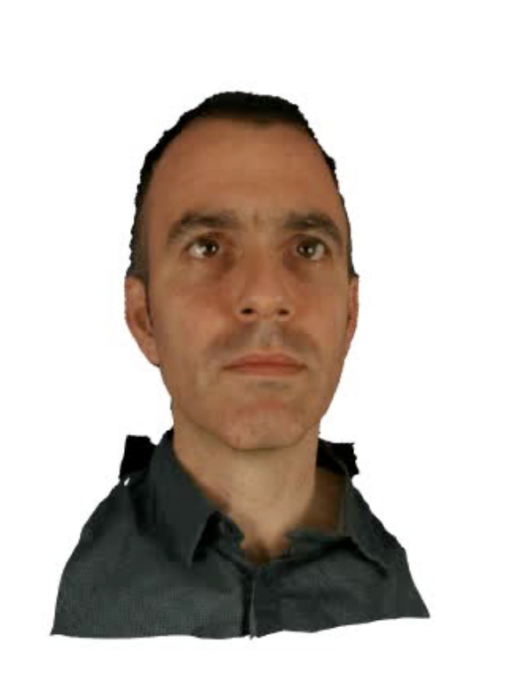 Smooth low-dimensional topology and related topicsUniversity of Glasgow
Smooth low-dimensional topology and related topicsUniversity of GlasgowMy research is in low-dimensional topology. I am interested in smooth 3-manifolds, 4-manifolds and their submanifolds, and in the use of gauge-theoretic invariants of manifolds, especially Floer homology groups.
My research is in low-dimensional topology. I am interested in smooth 3-manifolds, 4-manifolds and their submanifolds, and in the use of gauge-theoretic invariants of manifolds, especially Floer homology groups.
-
Ana Rita Pires
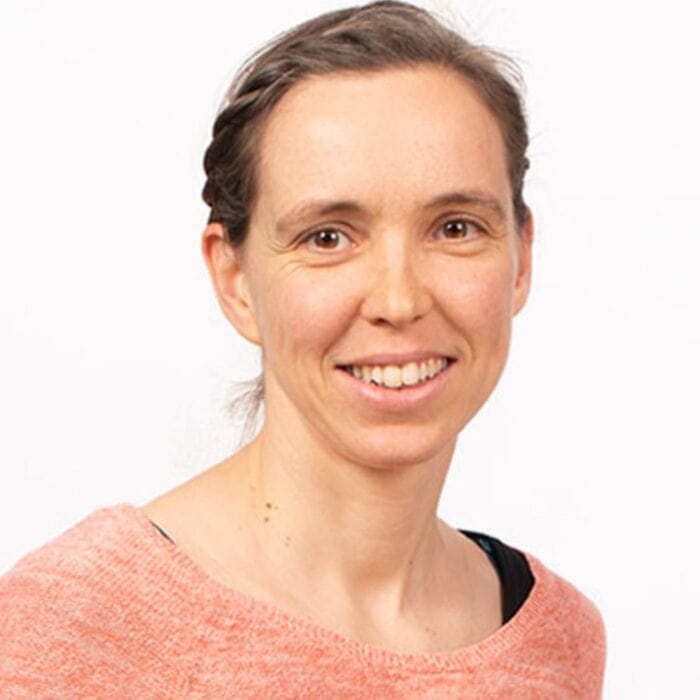 Symplectic geometry, in particular using hamiltonian actions and moment maps.University of Edinburgh
Symplectic geometry, in particular using hamiltonian actions and moment maps.University of EdinburghMy work on degenerate symplectic structures — origami manifolds and b-symplectic or log-symplectic manifolds — led me to connections with toric topology, contact geometry, and Poisson geometry. More recently I have become interested in quantitative symplectic geometry by working on symplectic embedding problems.
My work on degenerate symplectic structures — origami manifolds and b-symplectic or log-symplectic manifolds — led me to connections with toric topology, contact geometry, and Poisson geometry. More recently I have become interested in quantitative symplectic geometry by working on symplectic embedding problems.
-
Mark Powell
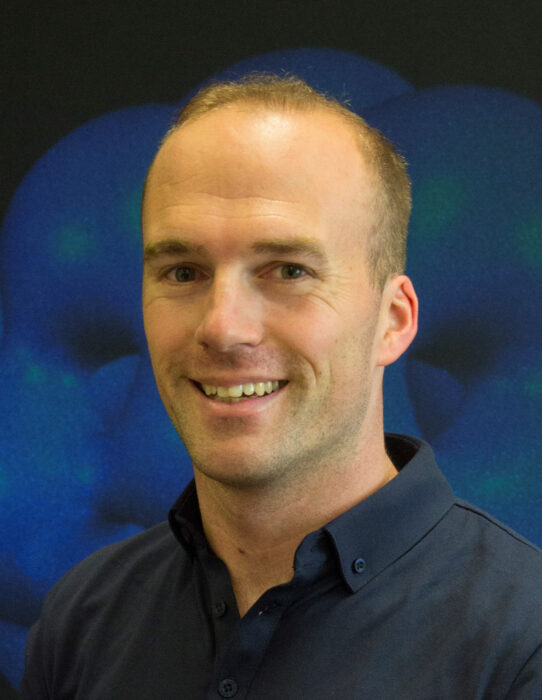 Algebraic and geometric topology, and homological algebraUniversity of Glasgow
Algebraic and geometric topology, and homological algebraUniversity of GlasgowTopology of manifolds, in particular smooth and topological 4-manifolds. Symmetries, classification, and knotted surfaces.
Topology of manifolds, in particular smooth and topological 4-manifolds. Symmetries, classification, and knotted surfaces.
-
Jon Pridham
Applications of abstract homotopy theory to algebraic geometry.University of EdinburghMy research has two main strands: derived algebraic geometry, and homotopy theory of algebraic varieties (including arithmetic and motivic aspects). You can find my papers on the arXiv or my homepage. I’m not recruiting PhD students at this time.
My research has two main strands: derived algebraic geometry, and homotopy theory of algebraic varieties (including arithmetic and motivic aspects). You can find my papers on the arXiv or my homepage. I’m not recruiting PhD students at this time.
-
Anna Puskás
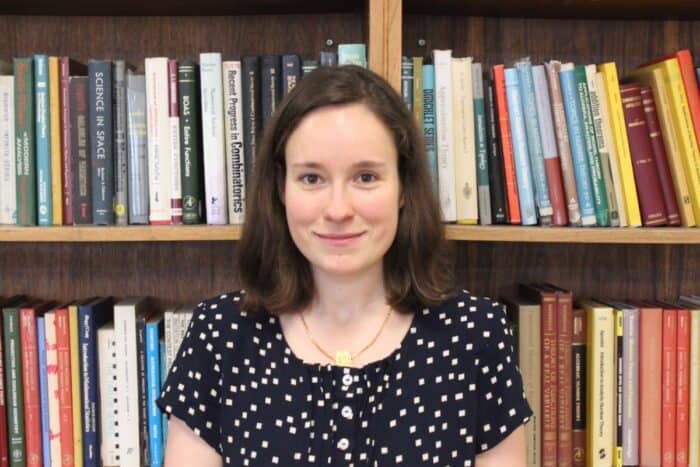 Combinatorial Representation Theory and Number TheoryUniversity of Glasgow
Combinatorial Representation Theory and Number TheoryUniversity of GlasgowMy interests lie at the intersection of representation theory, number theory, and algebraic combinatorics. Generally, I like thinking about objects coming from representation theory or number theory in terms of algebraic combinatorics.
My interests lie at the intersection of representation theory, number theory, and algebraic combinatorics. Generally, I like thinking about objects coming from representation theory or number theory in terms of algebraic combinatorics.
-
Christian Saemann
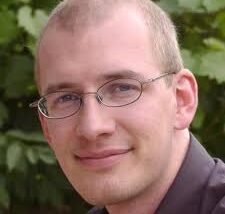 Mathematical Physics and String Theory.Heriot-Watt University
Mathematical Physics and String Theory.Heriot-Watt UniversityMy research interests include twistor geometry and integrability, noncommutative geometry and geometric quantization as well as string and M theory.
My research interests include twistor geometry and integrability, noncommutative geometry and geometric quantization as well as string and M theory.
-
Pavel Safronov
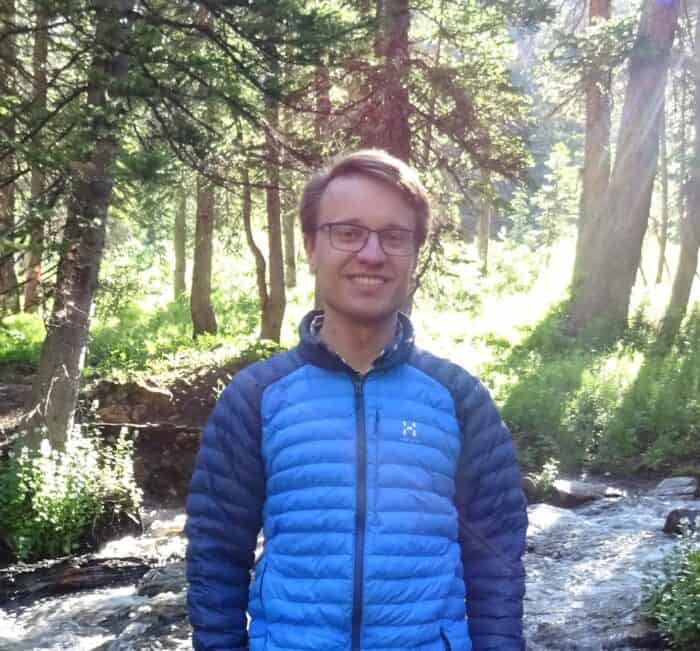 The intersection of representation theory, algebraic geometry and mathematical physics.University of Edinburgh
The intersection of representation theory, algebraic geometry and mathematical physics.University of EdinburghI am interested in problems lying at the intersection of representation theory (of quantum groups), algebraic geometry (in particular, derived algebraic and derived symplectic geometry) and mathematical physics (supersymmetric field theories, topological field theories, deformation quantization). Currently I am thinking about derived microlocal geometry.
I am interested in problems lying at the intersection of representation theory (of quantum groups), algebraic geometry (in particular, derived algebraic and derived symplectic geometry) and mathematical physics (supersymmetric field theories, topological field theories, deformation quantization). Currently I am thinking about derived microlocal geometry.
-
Bernd Schroers
 Mathematical physics, particularly geometric and solitonic models of matter and quantum gravity in three dimensions.University of Edinburgh
Mathematical physics, particularly geometric and solitonic models of matter and quantum gravity in three dimensions.University of EdinburghMy research interests include topological solitons (particularly magnetic monopoles, vortices and skyrmions), quantum groups and quantum gravity in (2+1) dimensions.
My research interests include topological solitons (particularly magnetic monopoles, vortices and skyrmions), quantum groups and quantum gravity in (2+1) dimensions.
-
Alexander Shapiro
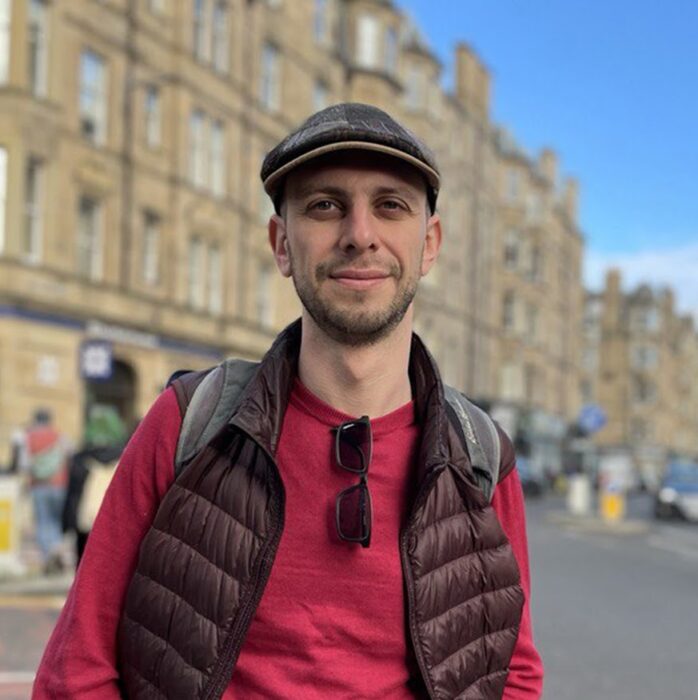 Representation theory and Poisson geometry.University of Edinburgh
Representation theory and Poisson geometry.University of EdinburghI am interested in representation theory and Poisson geometry. My work concerns quantum groups, cluster algebra, character varieties, and integrable systems. Most of my work concerns applying cluster algebraic methods to problems in quantum groups, integrable systems, higher Teichmüller theory, and low-dimensional topology.
I am interested in representation theory and Poisson geometry. My work concerns quantum groups, cluster algebra, character varieties, and integrable systems. Most of my work concerns applying cluster algebraic methods to problems in quantum groups, integrable systems, higher Teichmüller theory, and low-dimensional topology.
-
Nick Sheridan
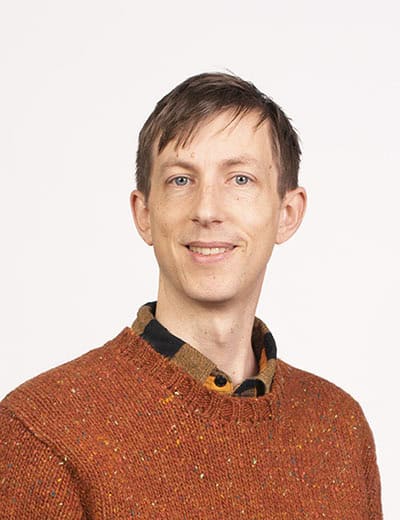 Mirror symmetry, symplectic topologyUniversity of Edinburgh
Mirror symmetry, symplectic topologyUniversity of EdinburghI work on homological mirror symmetry and symplectic topology.
I work on homological mirror symmetry and symplectic topology.
-
Sue Sierra
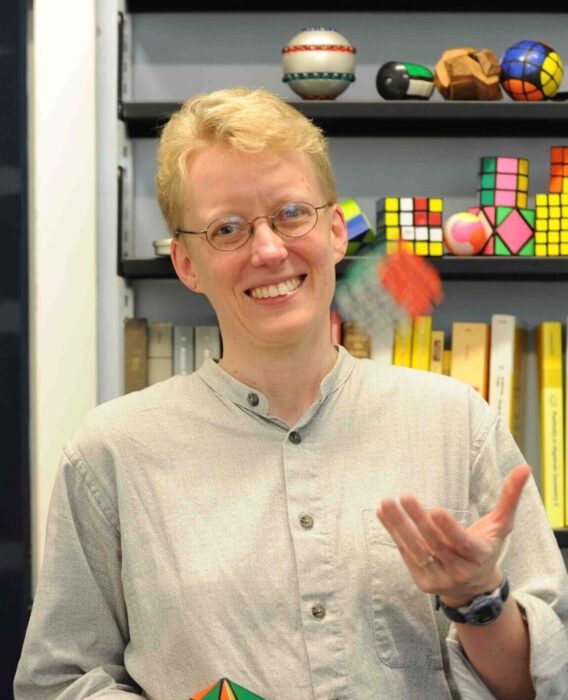 Noncommutative ring theory, algebraic geometry, and their interactions.University of Edinburgh
Noncommutative ring theory, algebraic geometry, and their interactions.University of EdinburghI am a noncommutative ring theorist, specialising in interactions between ring theory and algebraic geometry, particularly the use of geometric techniques to solve problems in algebra. I am particularly interested in birationally commutative algebras (graded algebras that embed in a skew polynomial extension over a commutative ring) and in graded domains of low GK-dimension. Much of my research is motivated by the programme to classify connected graded domains of GK-dimension 3. I am also interested in moduli problems for graded rings and in algebraic geometry, and recently I have begun to work on problems coming from Lie theory, particularly chain conditions in enveloping algebras of infinite-dimensional Lie algebras. I’m not recruiting PhD students at this time.
I am a noncommutative ring theorist, specialising in interactions between ring theory and algebraic geometry, particularly the use of geometric techniques to solve problems in algebra. I am particularly interested in birationally commutative algebras (graded algebras that embed in a skew polynomial extension over a commutative ring) and in graded domains of low GK-dimension. Much of my research is motivated by the programme to classify connected graded domains of GK-dimension 3. I am also interested in moduli problems for graded rings and in algebraic geometry, and recently I have begun to work on problems coming from Lie theory, particularly chain conditions in enveloping algebras of infinite-dimensional Lie algebras. I’m not recruiting PhD students at this time.
-
Joan Simón
 Black holes, resolution of singularities, use of quantum information and computation ideas in gravitational physicsUniversity of Edinburgh
Black holes, resolution of singularities, use of quantum information and computation ideas in gravitational physicsUniversity of EdinburghMy research interests lie in the understanding of the emergence of space and time, using the study of black holes and cosmological singularities in either the framework provided by string theory or more modern directions based on AdS/CFT, in which one explores the relation between gravitational physics, quantum information and quantum computation, building on the lessons that quantum entanglement has brought in our understanding of the fabric of spacetime.
My research interests lie in the understanding of the emergence of space and time, using the study of black holes and cosmological singularities in either the framework provided by string theory or more modern directions based on AdS/CFT, in which one explores the relation between gravitational physics, quantum information and quantum computation, building on the lessons that quantum entanglement has brought in our understanding of the fabric of spacetime.
-
Agata Smoktunowicz
Noncommutative ring theory, applied to group theory, Lie groups and algebras and to projective geometry.University of EdinburghI am interested in noncommutative algebra. Polynomial rings, matrix rings. Algebras with finite Gelfand-Kirillov dimension. Domains with finite and infinite Gelfand-Kirillov dimension. Algebras with exponential growth.
I am interested in noncommutative algebra. Polynomial rings, matrix rings. Algebras with finite Gelfand-Kirillov dimension. Domains with finite and infinite Gelfand-Kirillov dimension. Algebras with exponential growth.
-
Alessandro Sisto
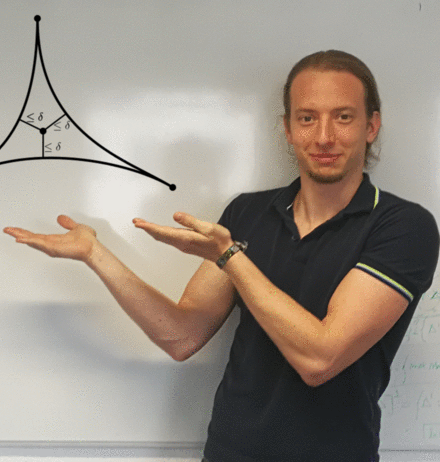 Geometric group theoryHeriot-Watt University
Geometric group theoryHeriot-Watt UniversityI work in geometric group theory, and in particular I specialise in Gromov-hyperbolicity and generalisations, and I especially like to study groups coming from topology such as mapping class groups.
I work in geometric group theory, and in particular I specialise in Gromov-hyperbolicity and generalisations, and I especially like to study groups coming from topology such as mapping class groups.
-
Efthymios Sofos
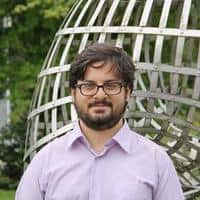 Analytic number theory or arithmetic geometryUniversity of Glasgow
Analytic number theory or arithmetic geometryUniversity of GlasgowMy whole research is about the number 1729. It is the sum of two integer cubes in two interesting ways. I use tools from analysis, geometry and probability to find similar representations for other similar equations-the area goes by the name Manin’s conjecture : https://en.wikipedia.org/wiki/Manin_conjecture
My whole research is about the number 1729. It is the sum of two integer cubes in two interesting ways. I use tools from analysis, geometry and probability to find similar representations for other similar equations-the area goes by the name Manin’s conjecture : https://en.wikipedia.org/wiki/Manin_conjecture
-
Ian Strachan
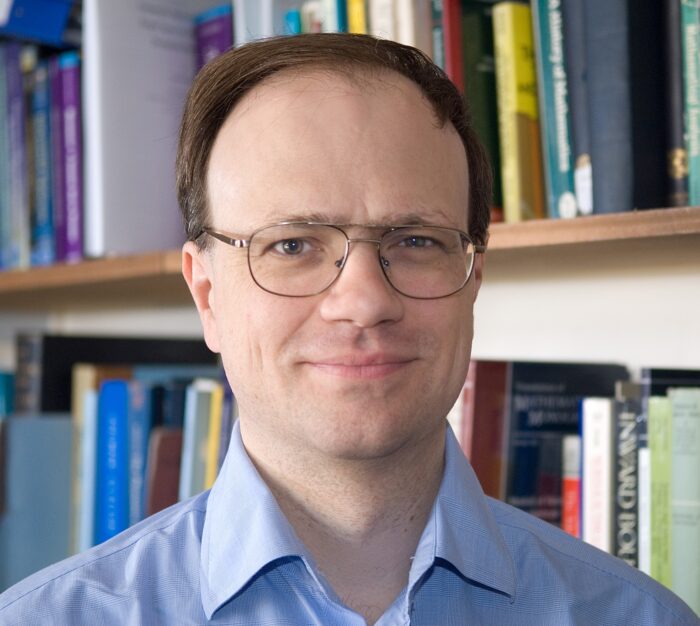 Integrable systems; Frobenius manifolds; deformed integrability; qDT invariants; hyperKahler geometry.University of Glasgow
Integrable systems; Frobenius manifolds; deformed integrability; qDT invariants; hyperKahler geometry.University of GlasgowI am interested in the interaction between complex differential geometry and the theory of integrable nonlinear systems. This include the study of equations which encode Gromov-Witten invariants (via Frobenius manifolds) and Donaldson-Thomas invariants (via Joyce structures and hyperKahler geometry).
I am interested in the interaction between complex differential geometry and the theory of integrable nonlinear systems. This include the study of equations which encode Gromov-Witten invariants (via Frobenius manifolds) and Donaldson-Thomas invariants (via Joyce structures and hyperKahler geometry).
-
Richard Szabo
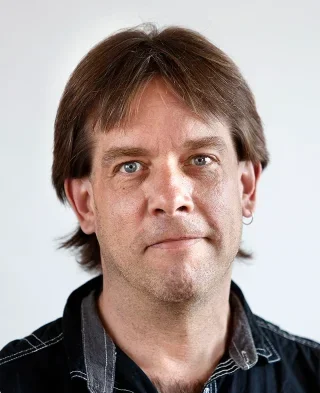 Mathematical Physics, including string theory, quantum field theory, quantum gravity Noncommutative geometry and field theory, K-theory, algebraic geometry, higher structures and category theoryHeriot-Watt University
Mathematical Physics, including string theory, quantum field theory, quantum gravity Noncommutative geometry and field theory, K-theory, algebraic geometry, higher structures and category theoryHeriot-Watt UniversityMy research centres around the applications of geometrical and topological methods to problems in quantum field theory and string theory, focusing in particular on techniques drawn from K-theory, noncommutative geometry, algebraic geometry and higher structures.
My research centres around the applications of geometrical and topological methods to problems in quantum field theory and string theory, focusing in particular on techniques drawn from K-theory, noncommutative geometry, algebraic geometry and higher structures.
-
Neil Turok
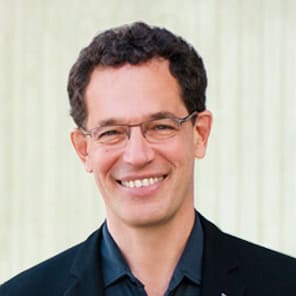 Theoretical PhysicsUniversity of Edinburgh
Theoretical PhysicsUniversity of EdinburghI am interested in fundamental questions of cosmology
I am interested in fundamental questions of cosmology
-
Christian Voigt
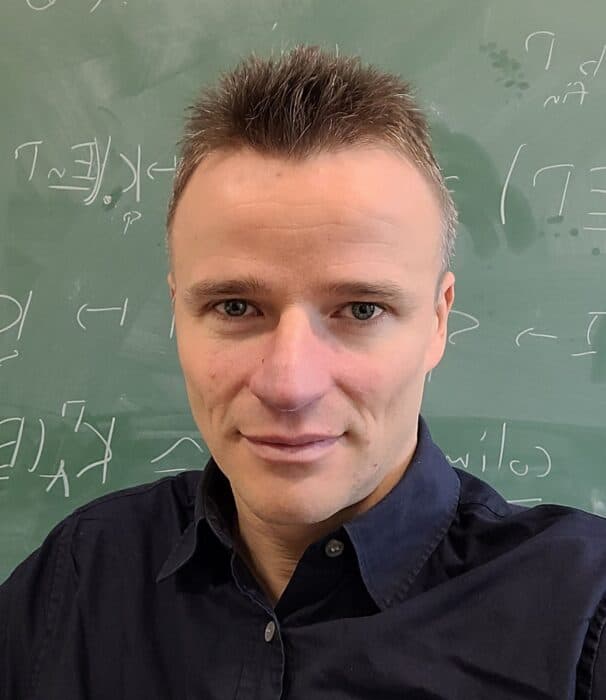 Noncommutative geometry, operator K-theory, and quantum groupsUniversity of Glasgow
Noncommutative geometry, operator K-theory, and quantum groupsUniversity of GlasgowMy research area is noncommutative geometry, a modern part of mathematics with links to classical disciplines like topology, differential geometry, and mathematical physics. I am particularly interested in operator algebras, quantum groups, and cyclic homology.
My research area is noncommutative geometry, a modern part of mathematics with links to classical disciplines like topology, differential geometry, and mathematical physics. I am particularly interested in operator algebras, quantum groups, and cyclic homology.
-
Matthew Walters
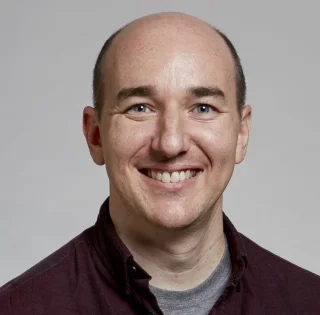 Nonperturbative quantum field theory, holography, conformal bootstrapHeriot-Watt University
Nonperturbative quantum field theory, holography, conformal bootstrapHeriot-Watt UniversityI am interested in various nonperturbative aspects of quantum field theory, including scattering, thermalization, phase transitions, and confinement, often from the perspective of the conformal bootstrap and holography.
I am interested in various nonperturbative aspects of quantum field theory, including scattering, thermalization, phase transitions, and confinement, often from the perspective of the conformal bootstrap and holography.
-
Andy Wand
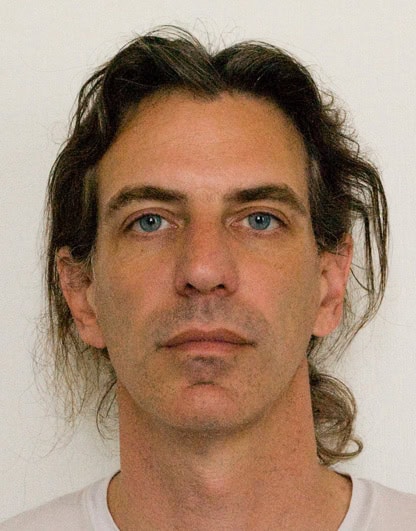 Low dimensional contact and symplectic topologyUniversity of Glasgow
Low dimensional contact and symplectic topologyUniversity of GlasgowI currently supervise/co-supervise several students in various topics across low dimensional topology, focusing mainly on contact topology, aspects of knot theory, and mapping class groups of surfaces. I am happy to discuss potential supervision
I currently supervise/co-supervise several students in various topics across low dimensional topology, focusing mainly on contact topology, aspects of knot theory, and mapping class groups of surfaces. I am happy to discuss potential supervision
-
Michael Wemyss
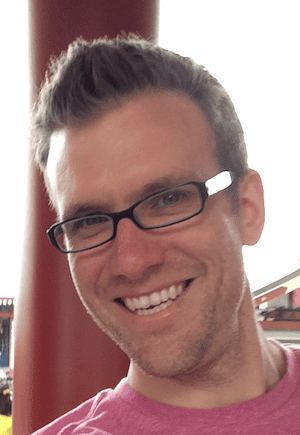 Algebraic geometry and its interactions with noncommutative and homological algebra.University of Glasgow
Algebraic geometry and its interactions with noncommutative and homological algebra.University of GlasgowMy main research interests are in algebraic geometry and its interactions, principally between noncommutative and homological algebra, resolutions of singularities, and the minimal model program. In the process of doing this, I have research interests in all related structures, including: deformation theory, derived categories, stability conditions, associated commutative and homological structures and their representation theory, curve invariants, McKay correspondence, Cohen–Macaulay modules, finite dimensional algebras and cluster-tilting theory.
My main research interests are in algebraic geometry and its interactions, principally between noncommutative and homological algebra, resolutions of singularities, and the minimal model program. In the process of doing this, I have research interests in all related structures, including: deformation theory, derived categories, stability conditions, associated commutative and homological structures and their representation theory, curve invariants, McKay correspondence, Cohen–Macaulay modules, finite dimensional algebras and cluster-tilting theory.
-
Robert Weston
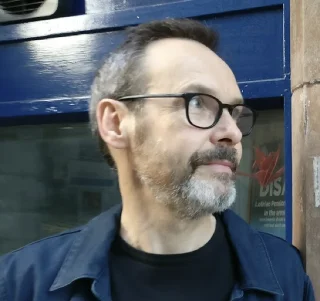 Integrable quantum field theory, solvable lattice models, quantum groups and related algebraic structures.Heriot-Watt University
Integrable quantum field theory, solvable lattice models, quantum groups and related algebraic structures.Heriot-Watt UniversityHis research interests are primarily in integrable quantum systems, both statistical-mechanical models and quantum field theories. My recent work focuses on solvable lattice models and in particular their analysis in terms of infinite-dimensional symmetry algebras.
His research interests are primarily in integrable quantum systems, both statistical-mechanical models and quantum field theories. My recent work focuses on solvable lattice models and in particular their analysis in terms of infinite-dimensional symmetry algebras.
-
Mike Whittaker
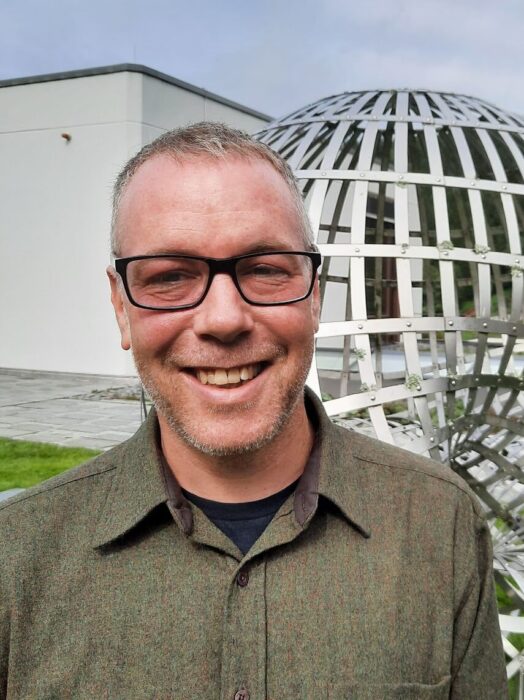 Self-similar groups, aperiodic tilings, and C*-algebras arising from topological dynamical systemsUniversity of Glasgow
Self-similar groups, aperiodic tilings, and C*-algebras arising from topological dynamical systemsUniversity of GlasgowMy primary research interest is the connection between topological dynamical systems and operator algebras. Starting with a dynamical system we construct C*-algebras that are used to ascertain dynamical invariants in a noncommutative framework. Some of my specific interests in this area include hyperbolic dynamical systems called Smale spaces, self-similar group actions, graph and k-graph algebras, and aperiodic substitution tilings. Using the noncommutative geometry program, developed by Alain Connes, we have used these algebras to construct K-theoretic invariants including Poincaré duality classes, KMS equilibrium states, and spectral triples. I have been particularly interested in dynamical systems that are fractal in nature, with comprehensible local structure but chaotic global behaviour. Aperiodic tilings are extremely useful for further understanding this type of phenomenon and serve as a geometric model for self-similar dynamical systems.
My primary research interest is the connection between topological dynamical systems and operator algebras. Starting with a dynamical system we construct C*-algebras that are used to ascertain dynamical invariants in a noncommutative framework. Some of my specific interests in this area include hyperbolic dynamical systems called Smale spaces, self-similar group actions, graph and k-graph algebras, and aperiodic substitution tilings. Using the noncommutative geometry program, developed by Alain Connes, we have used these algebras to construct K-theoretic invariants including Poincaré duality classes, KMS equilibrium states, and spectral triples. I have been particularly interested in dynamical systems that are fractal in nature, with comprehensible local structure but chaotic global behaviour. Aperiodic tilings are extremely useful for further understanding this type of phenomenon and serve as a geometric model for self-similar dynamical systems.
-
Runlian Xia
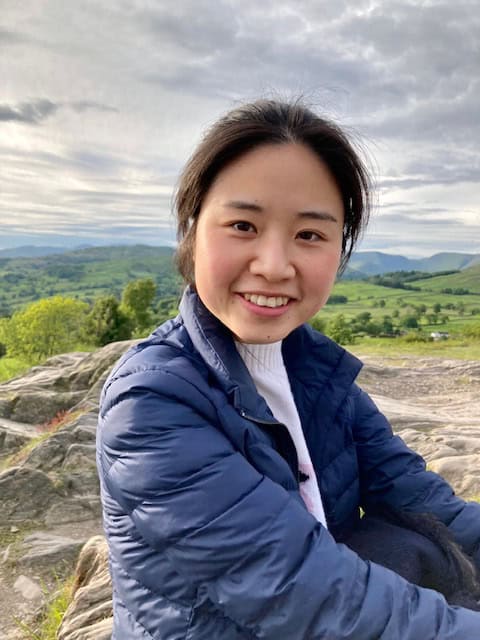 Interactions between operator algebras and harmonic analysisUniversity of Glasgow
Interactions between operator algebras and harmonic analysisUniversity of GlasgowI have wide interests in topics related to interactions between operator algebras and harmonic analysis. My recent research focus is on Calderón–Zygmund operators/Fourier multipliers on non-commutative Lp spaces associated with von Neumann algebras (non-commutative counterparts of measure spaces).
I have wide interests in topics related to interactions between operator algebras and harmonic analysis. My recent research focus is on Calderón–Zygmund operators/Fourier multipliers on non-commutative Lp spaces associated with von Neumann algebras (non-commutative counterparts of measure spaces).
-
Joachim Zacharias
 Operator algebras and related topicsUniversity of Glasgow
Operator algebras and related topicsUniversity of GlasgowI am interested in supervising further PhD students in the field of operator algebras and related topics. Please contact me by e-mail if you would like to do a PhD under my supervision/co-supervision. I am happy to suggest topics in C*-algebra theory and dynamical systems, classification of simple C*-algebras, approximation properties of groups and operator algebras, K-theory and related topics.
I am interested in supervising further PhD students in the field of operator algebras and related topics. Please contact me by e-mail if you would like to do a PhD under my supervision/co-supervision. I am happy to suggest topics in C*-algebra theory and dynamical systems, classification of simple C*-algebras, approximation properties of groups and operator algebras, K-theory and related topics.